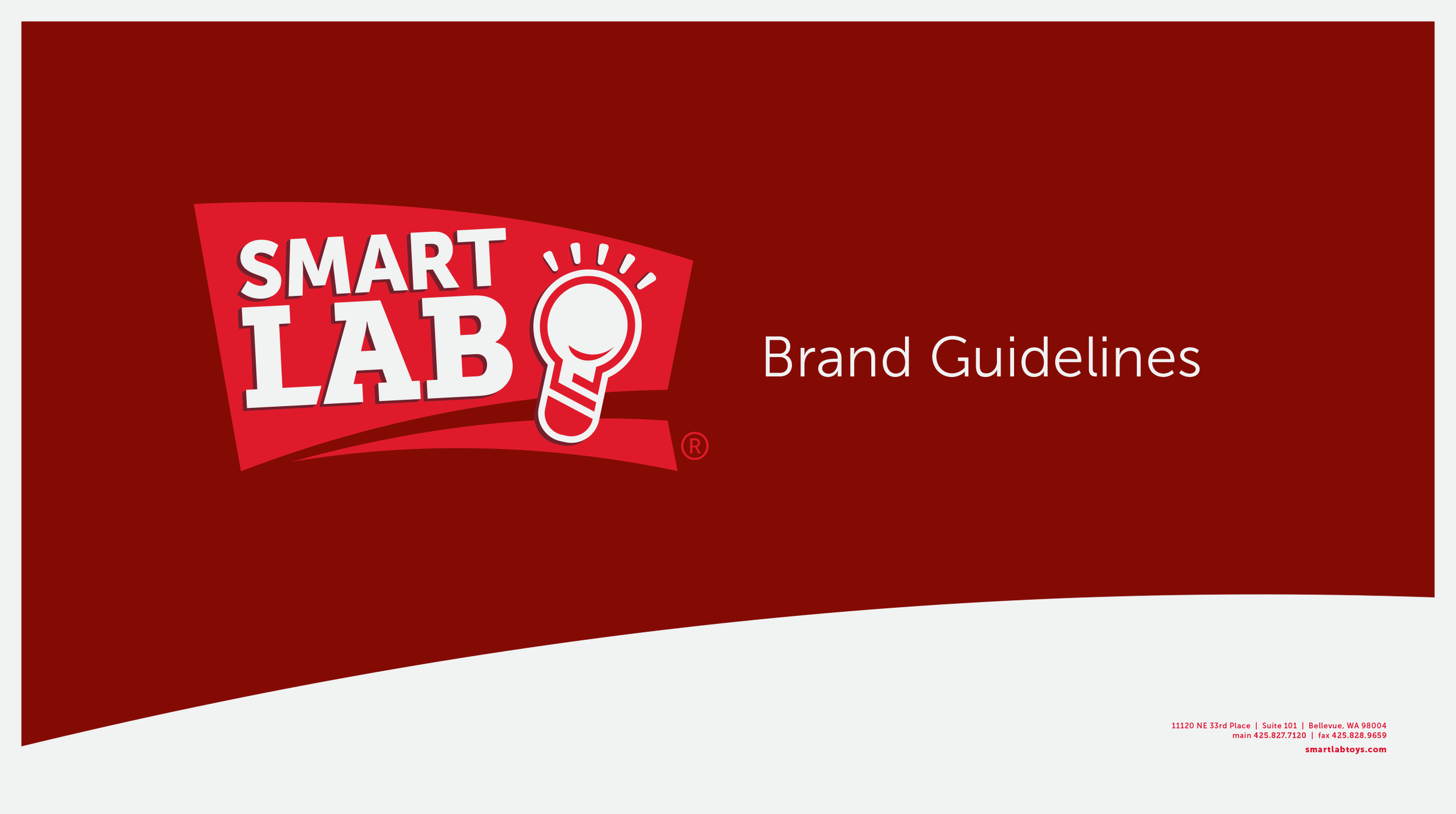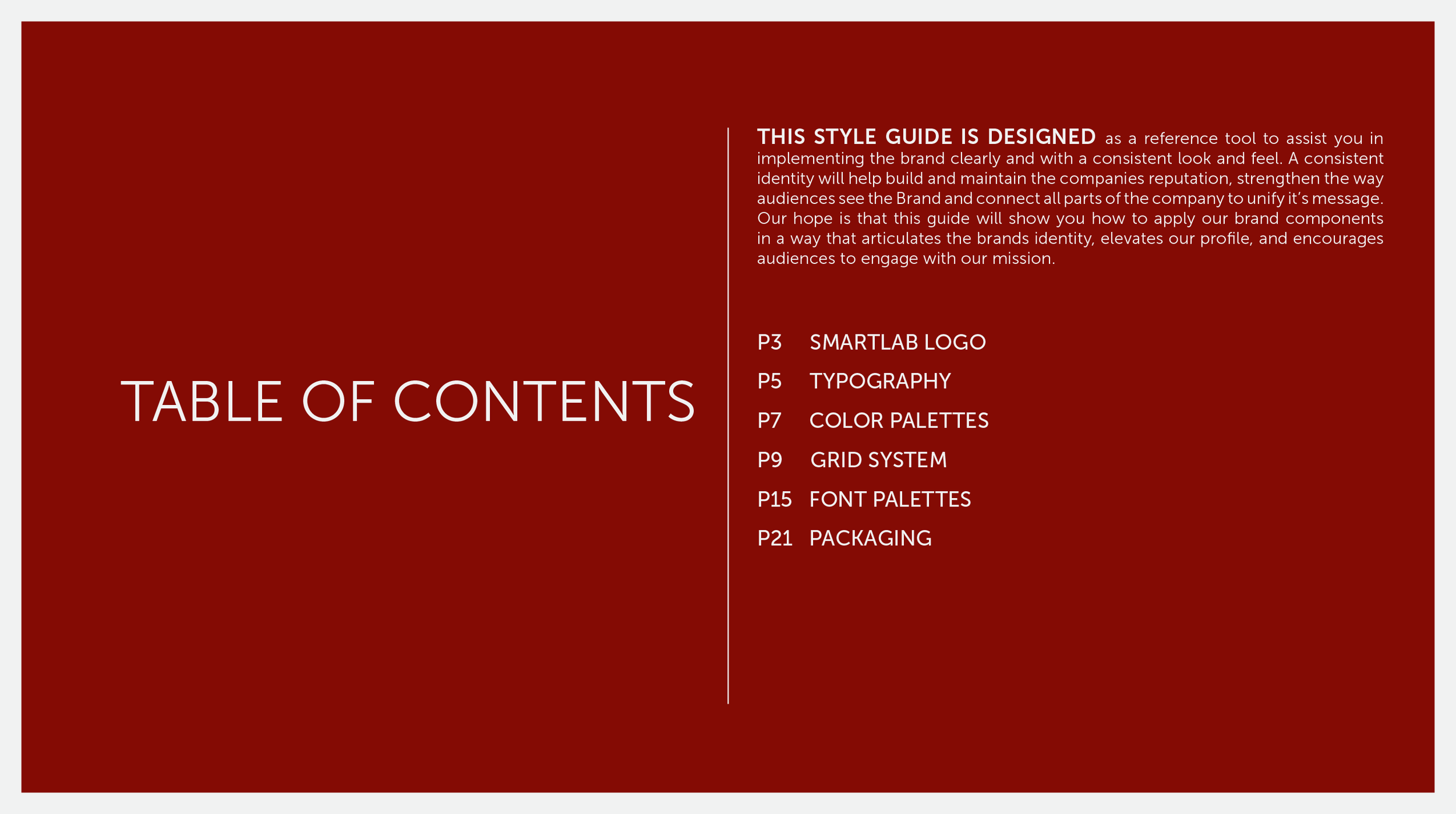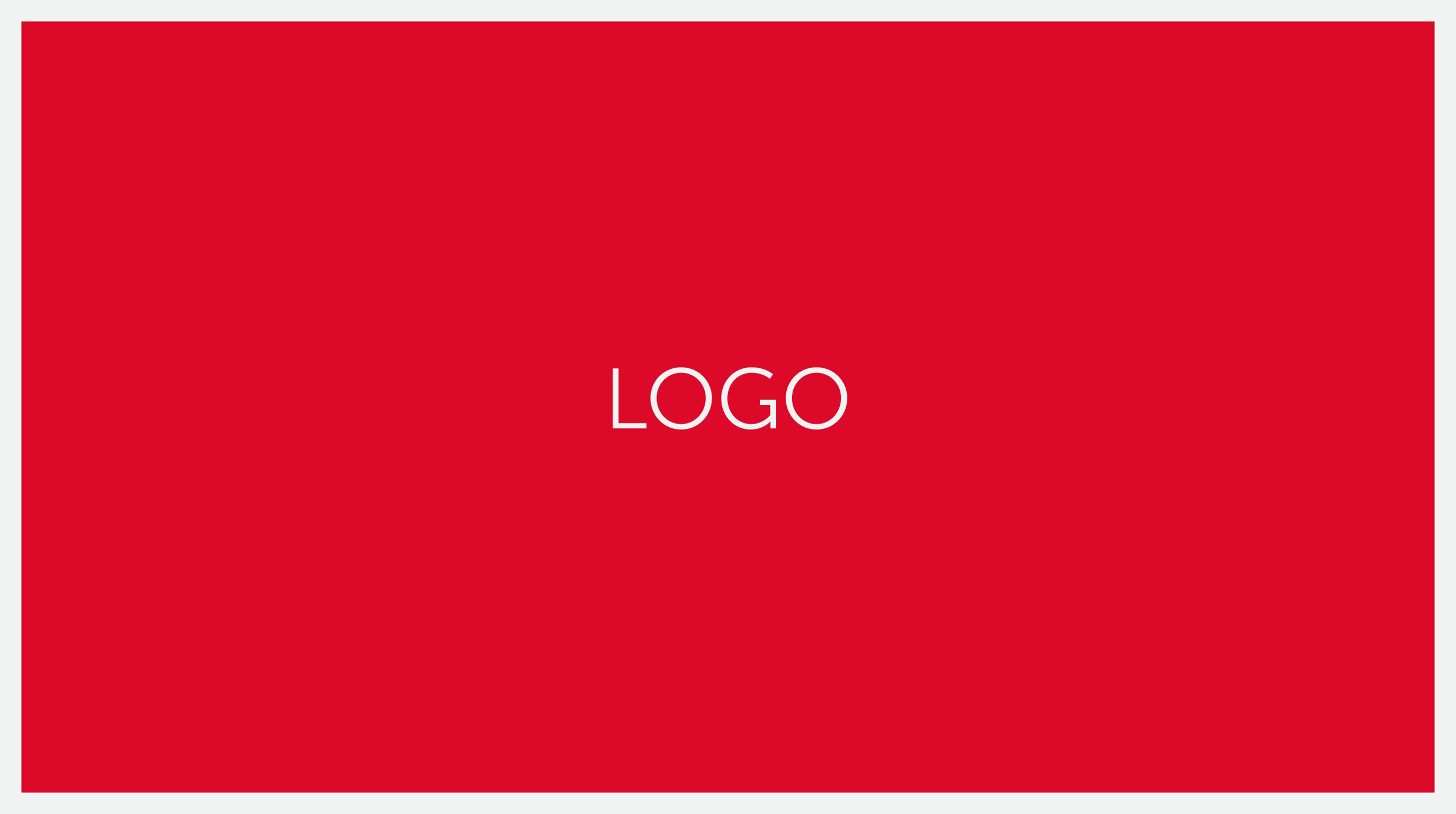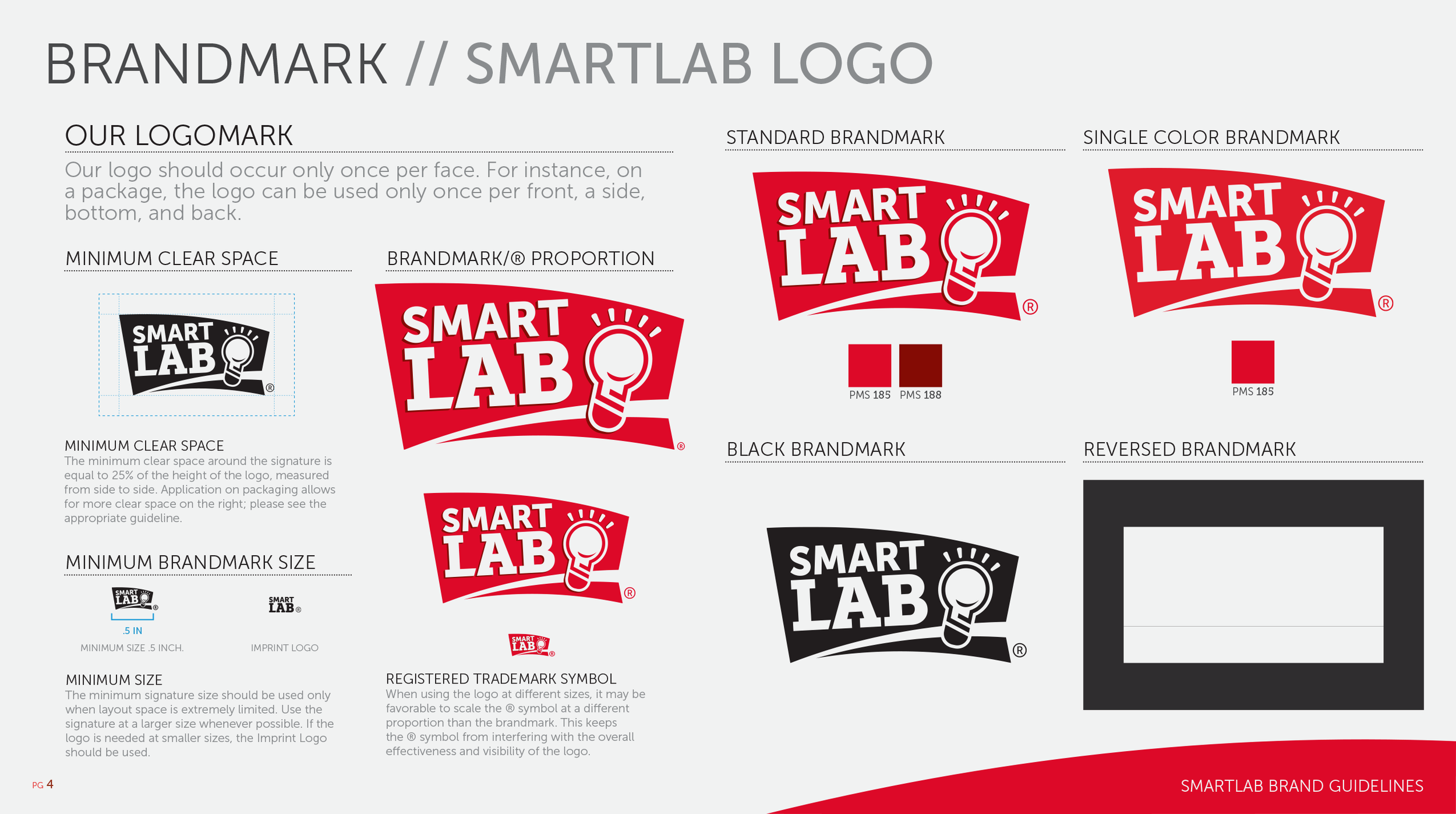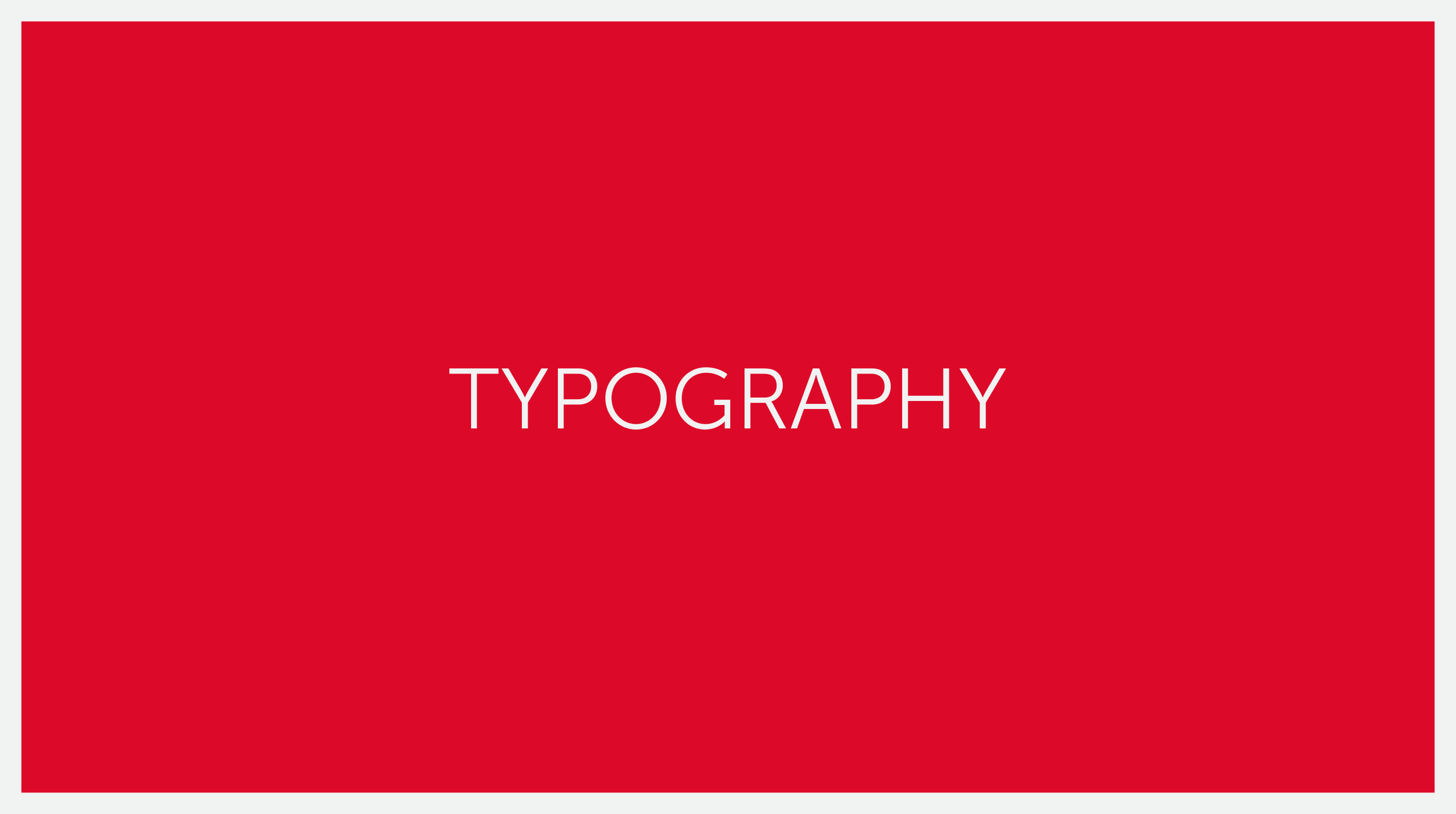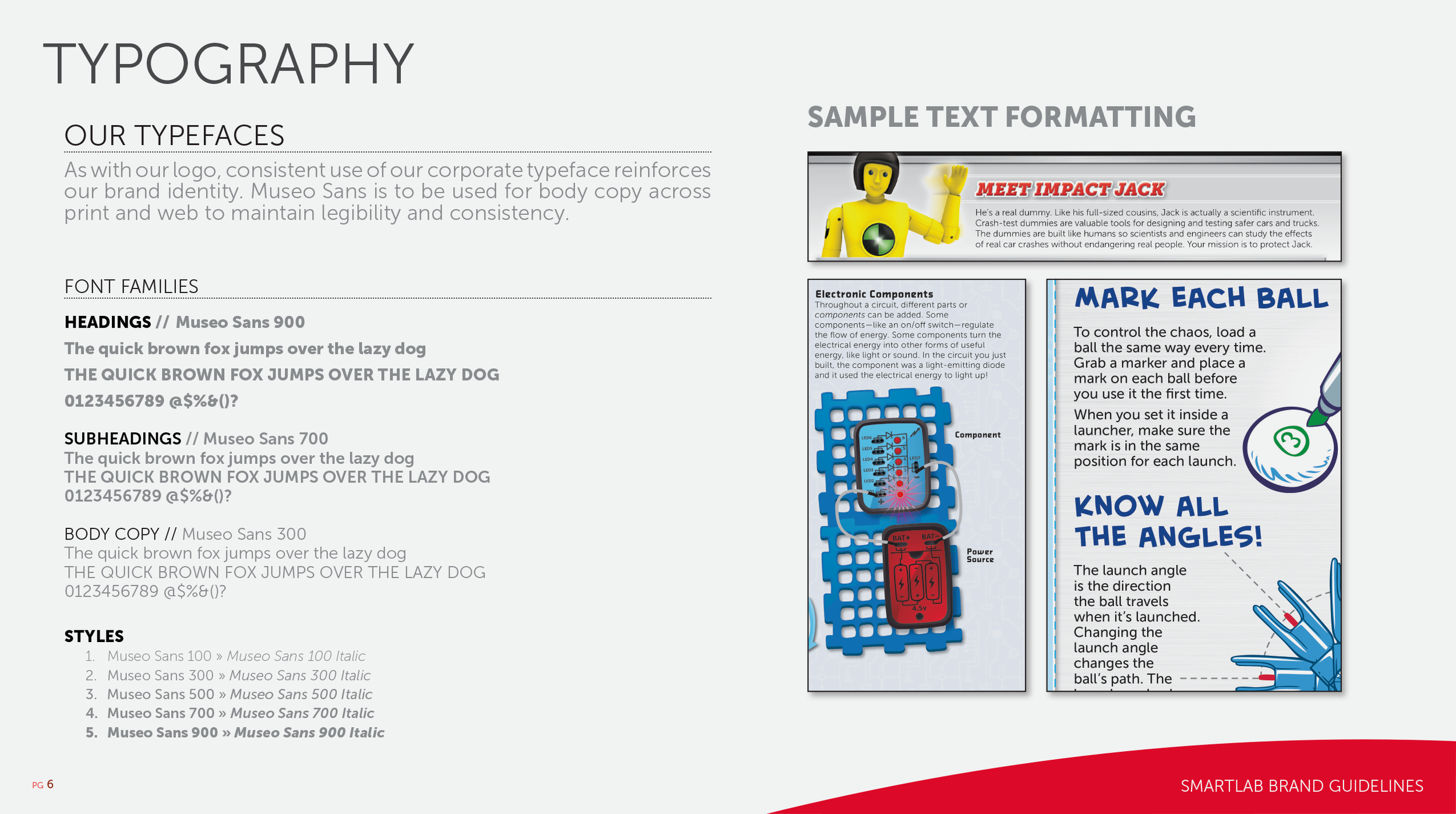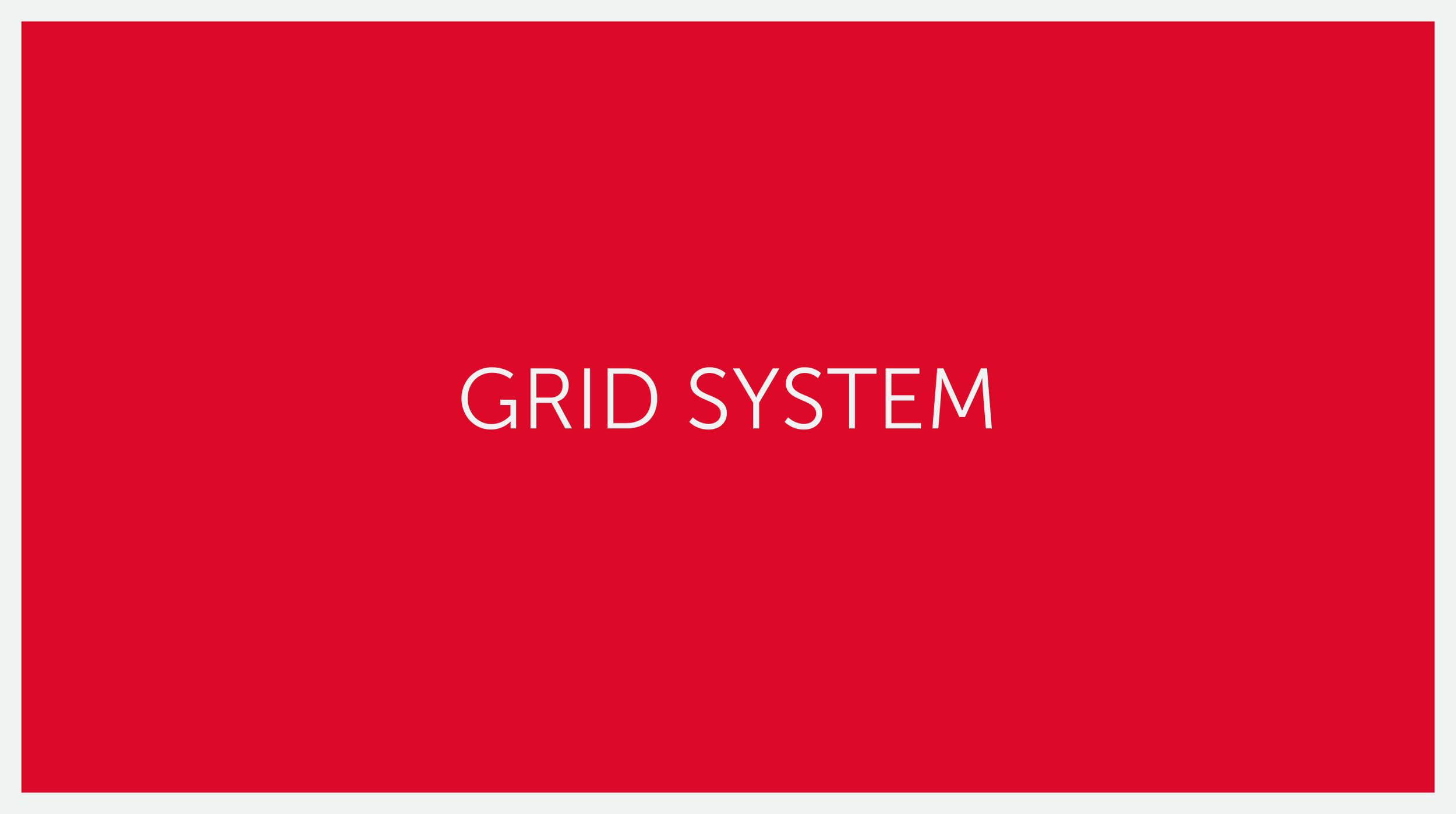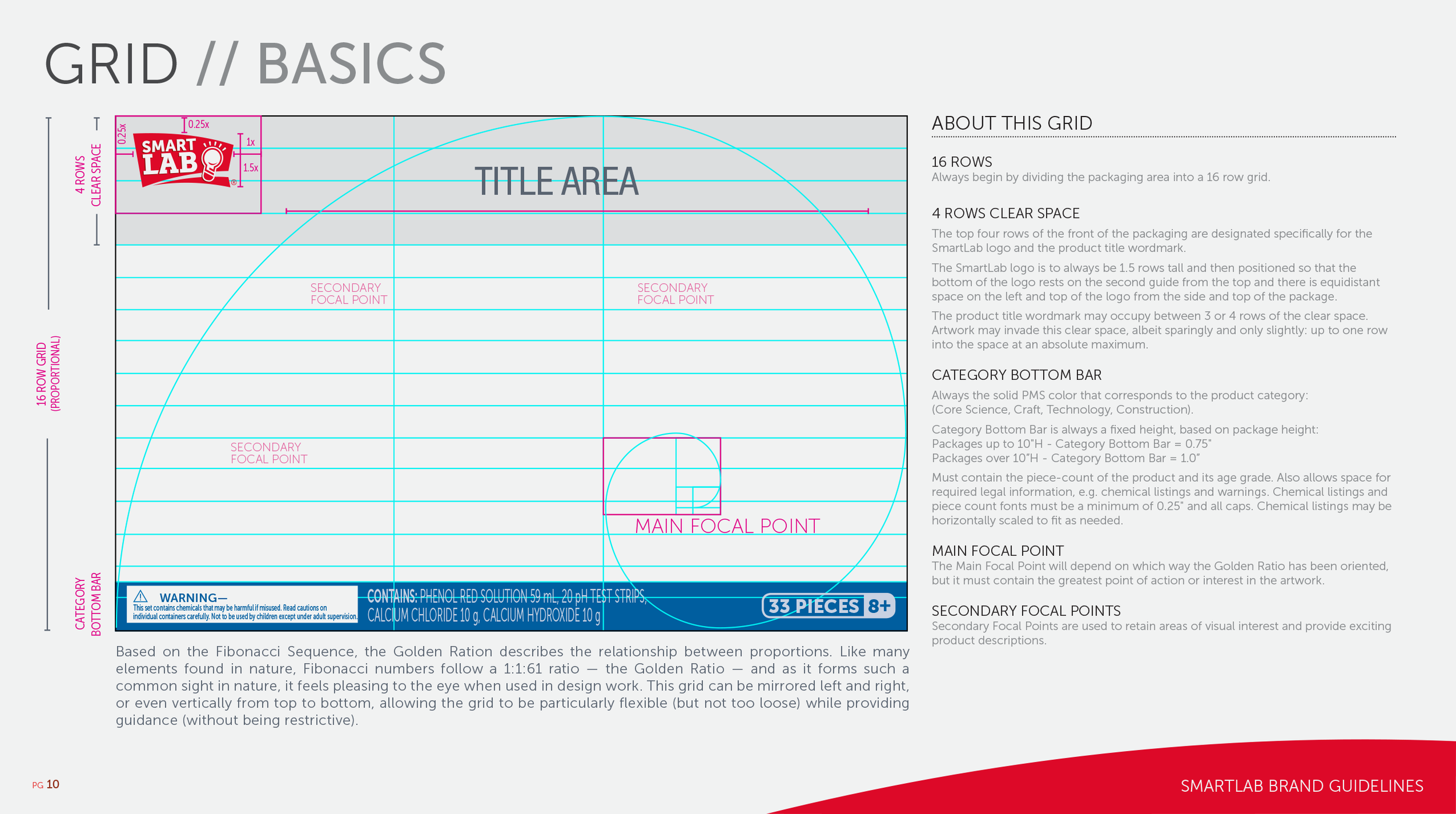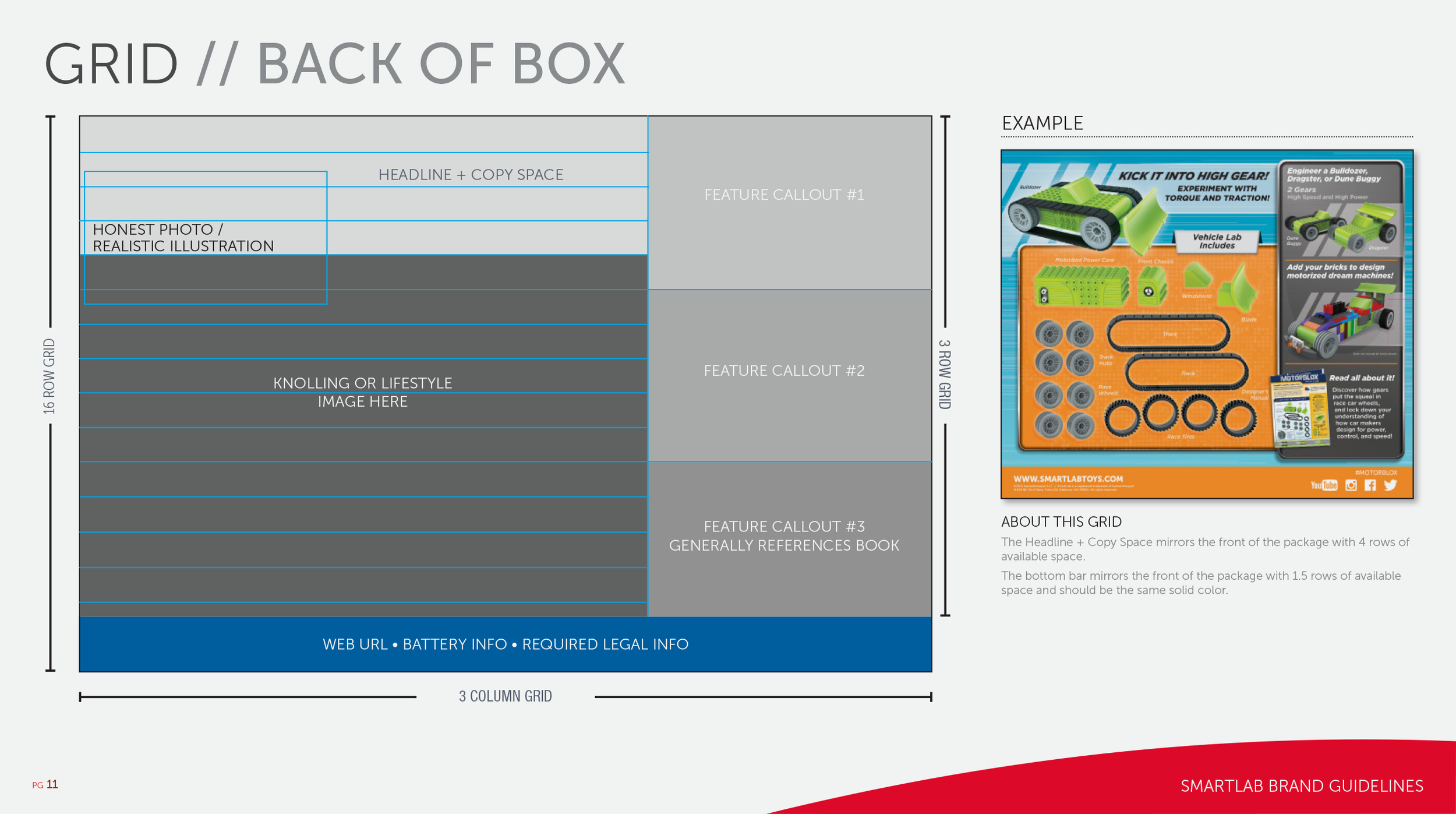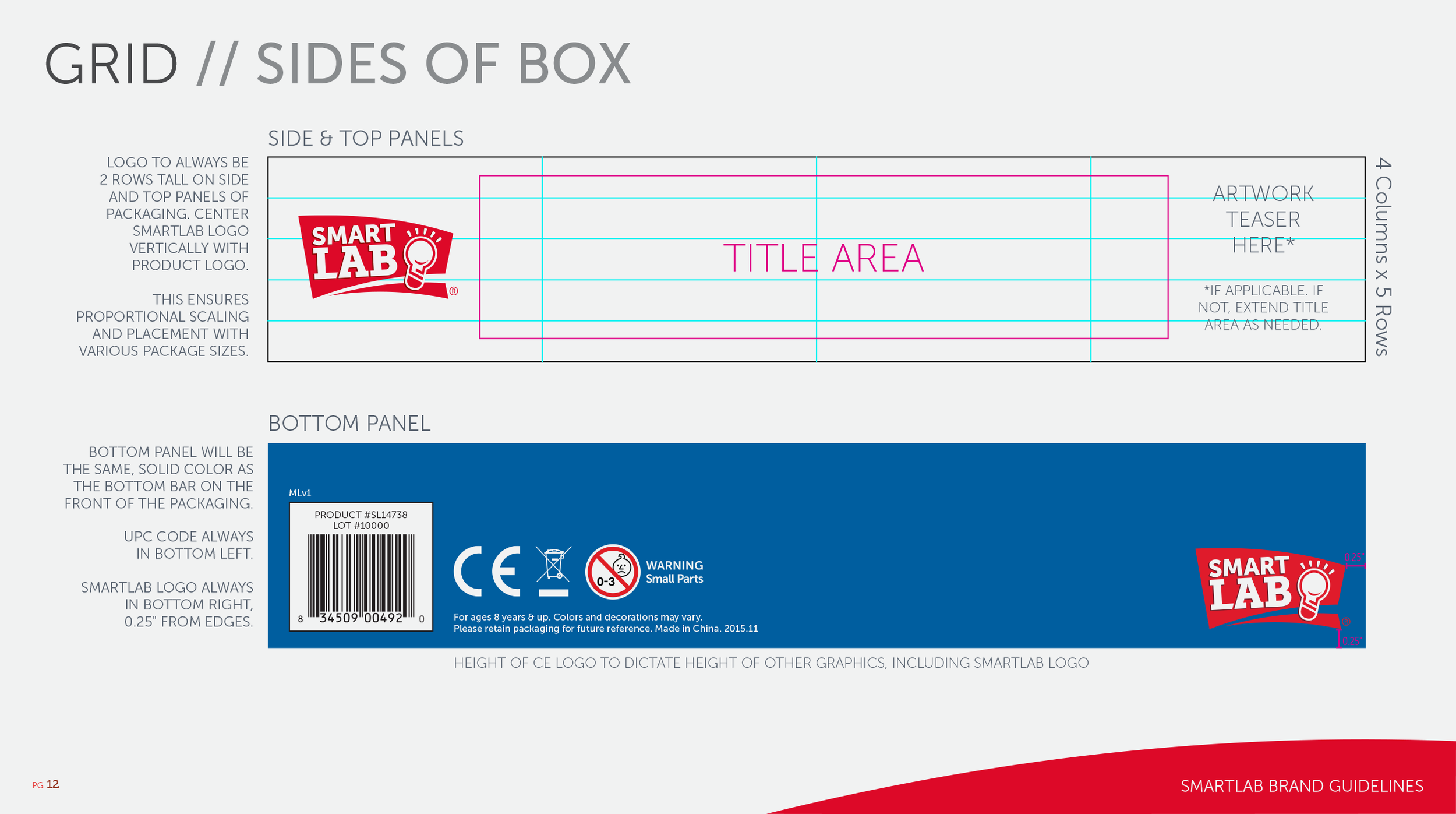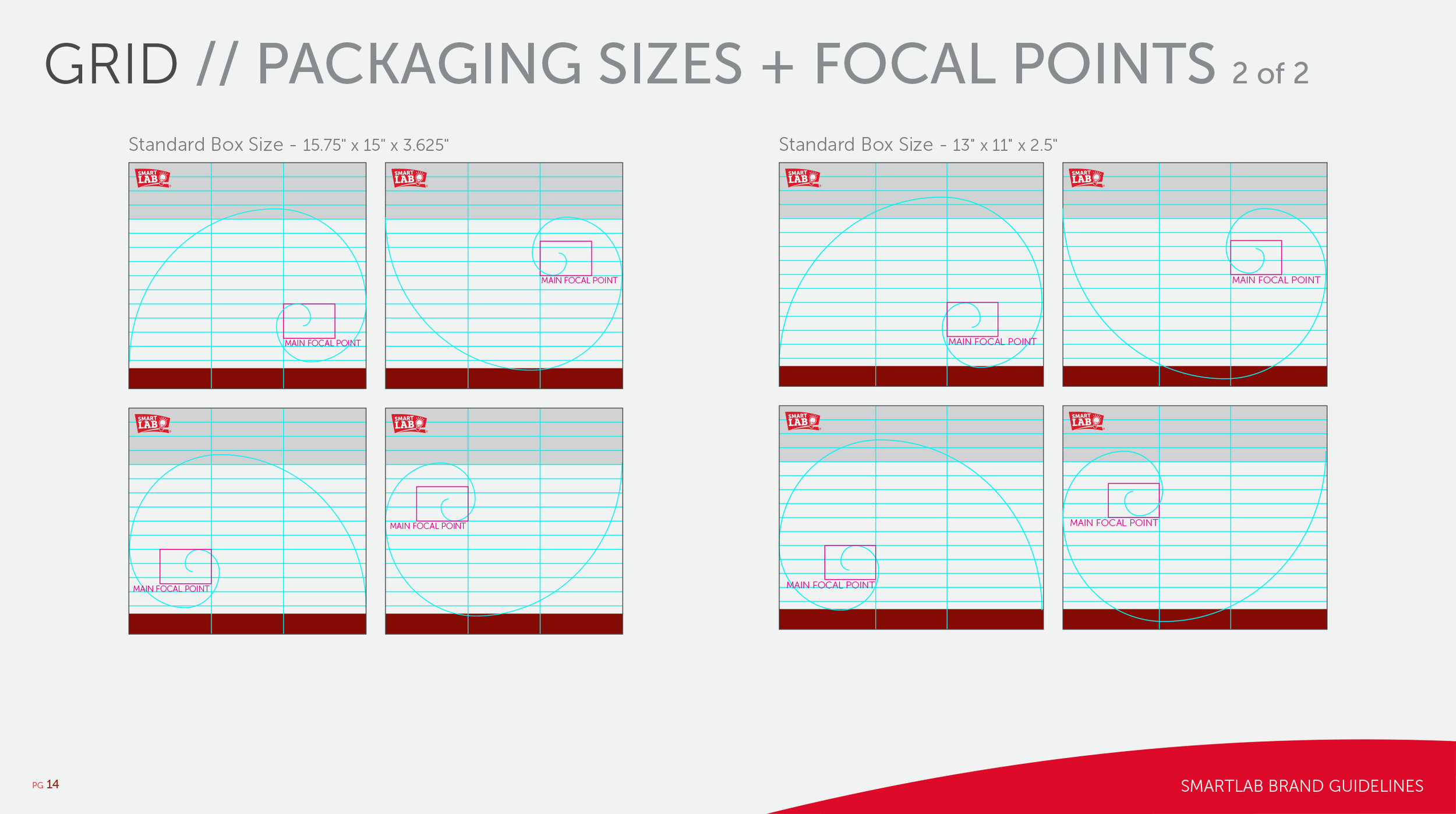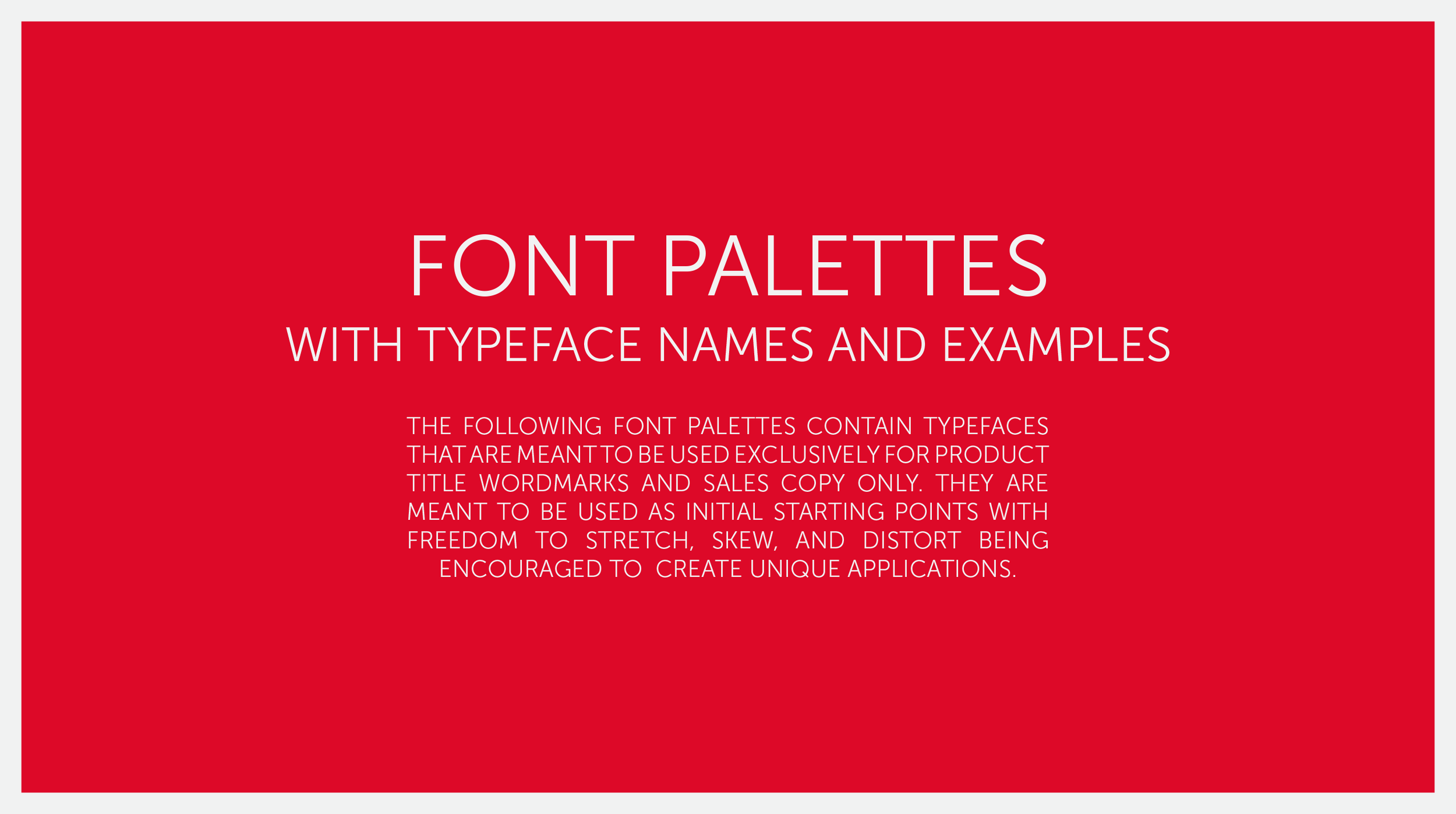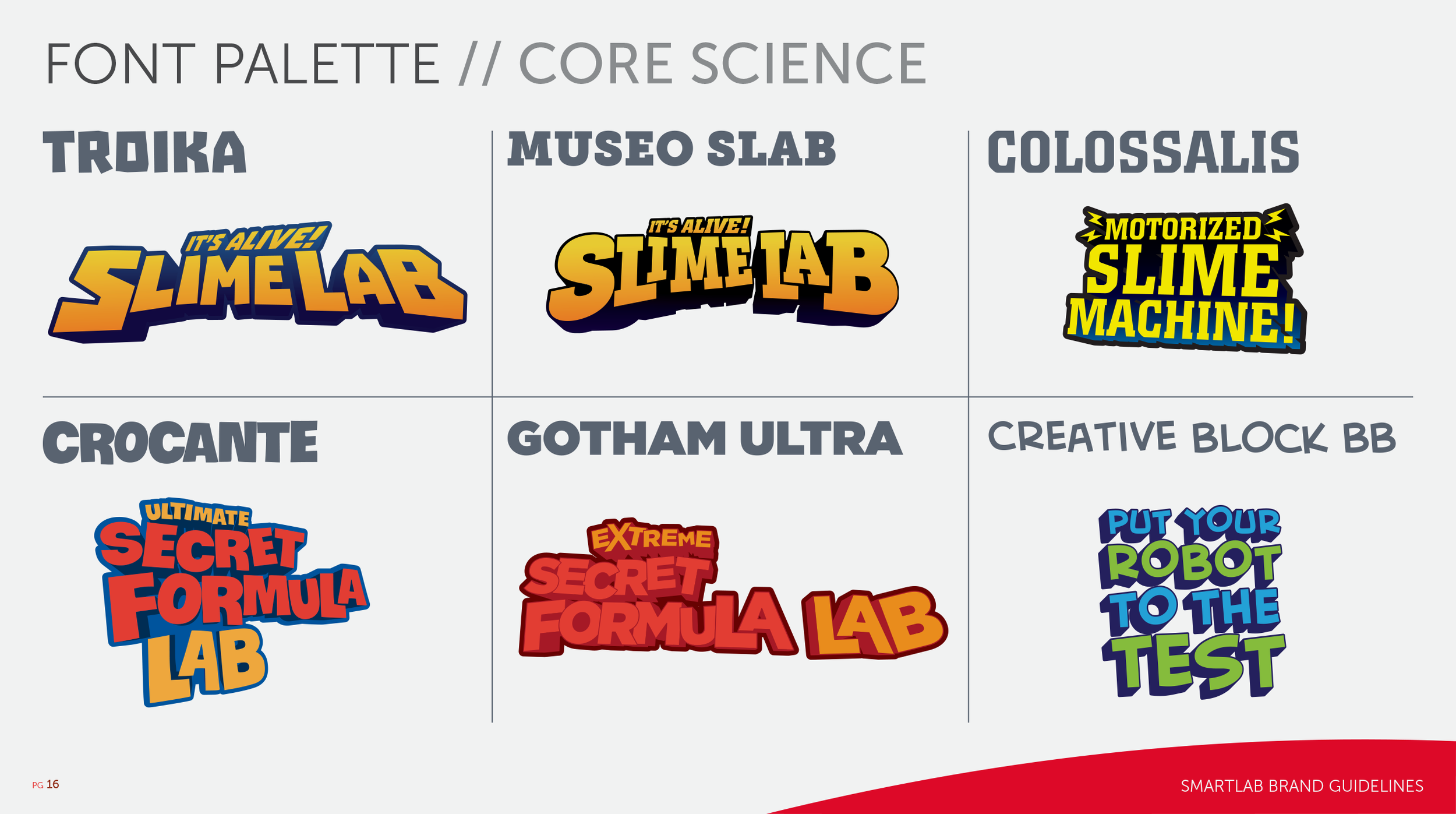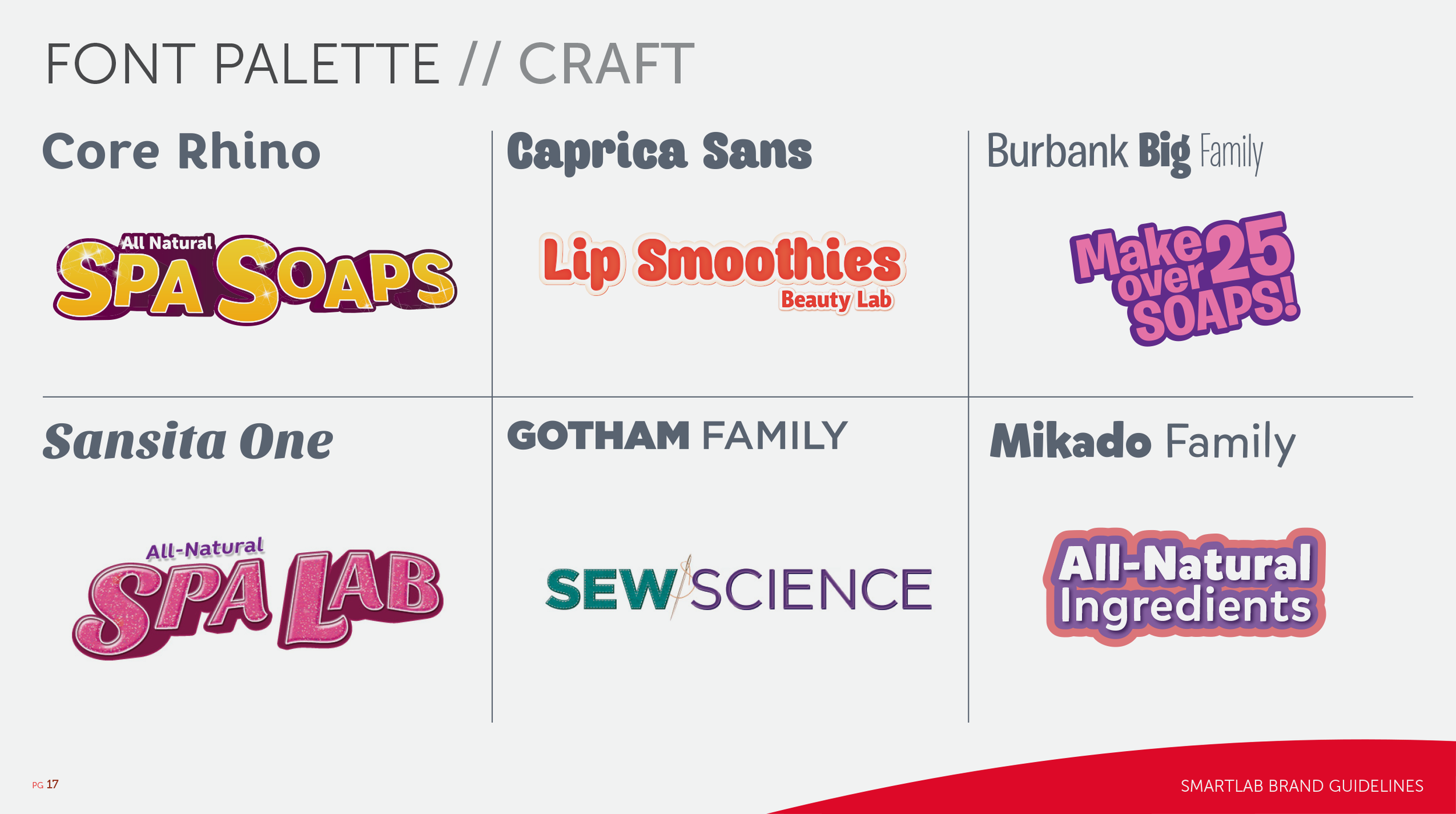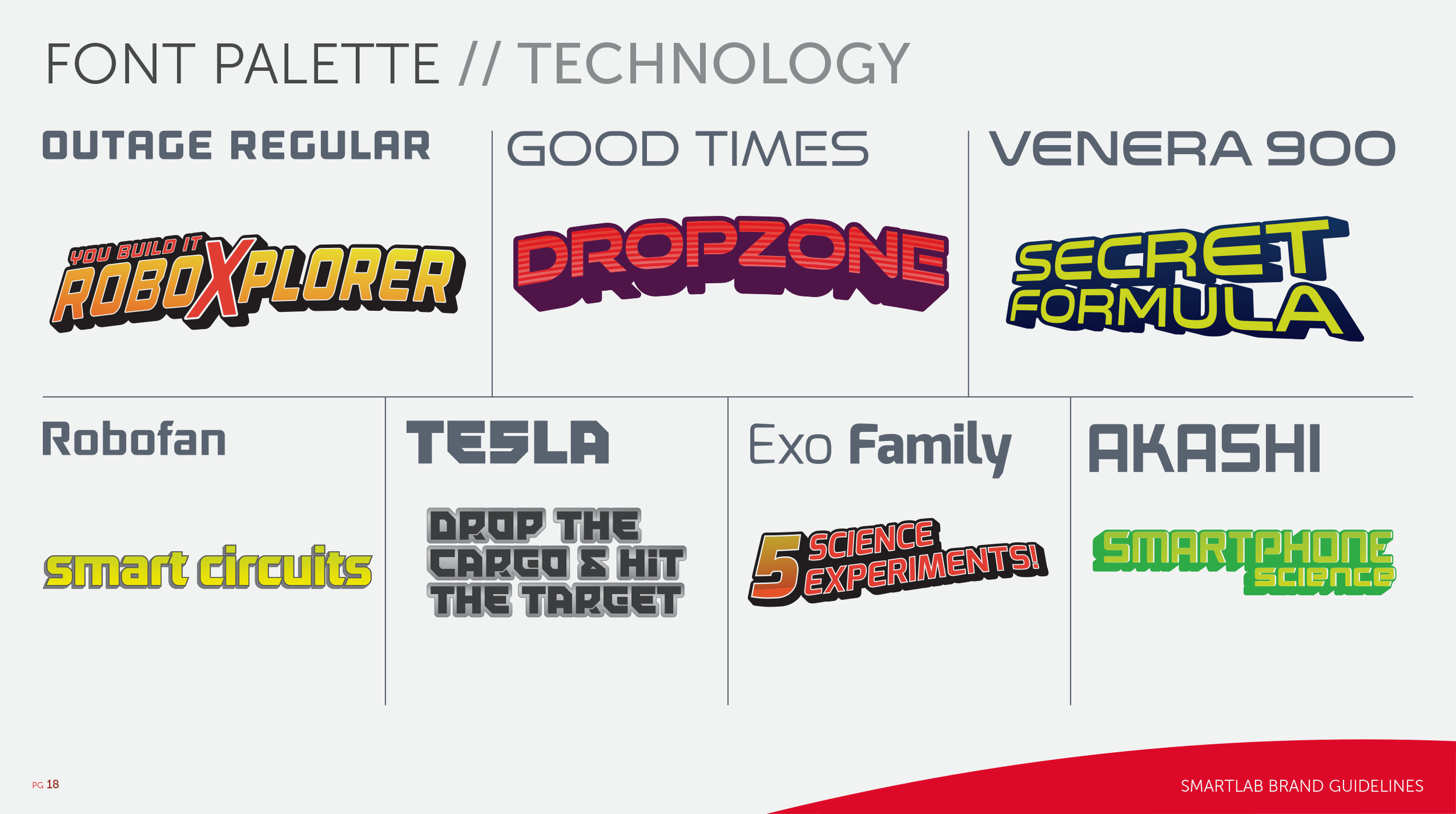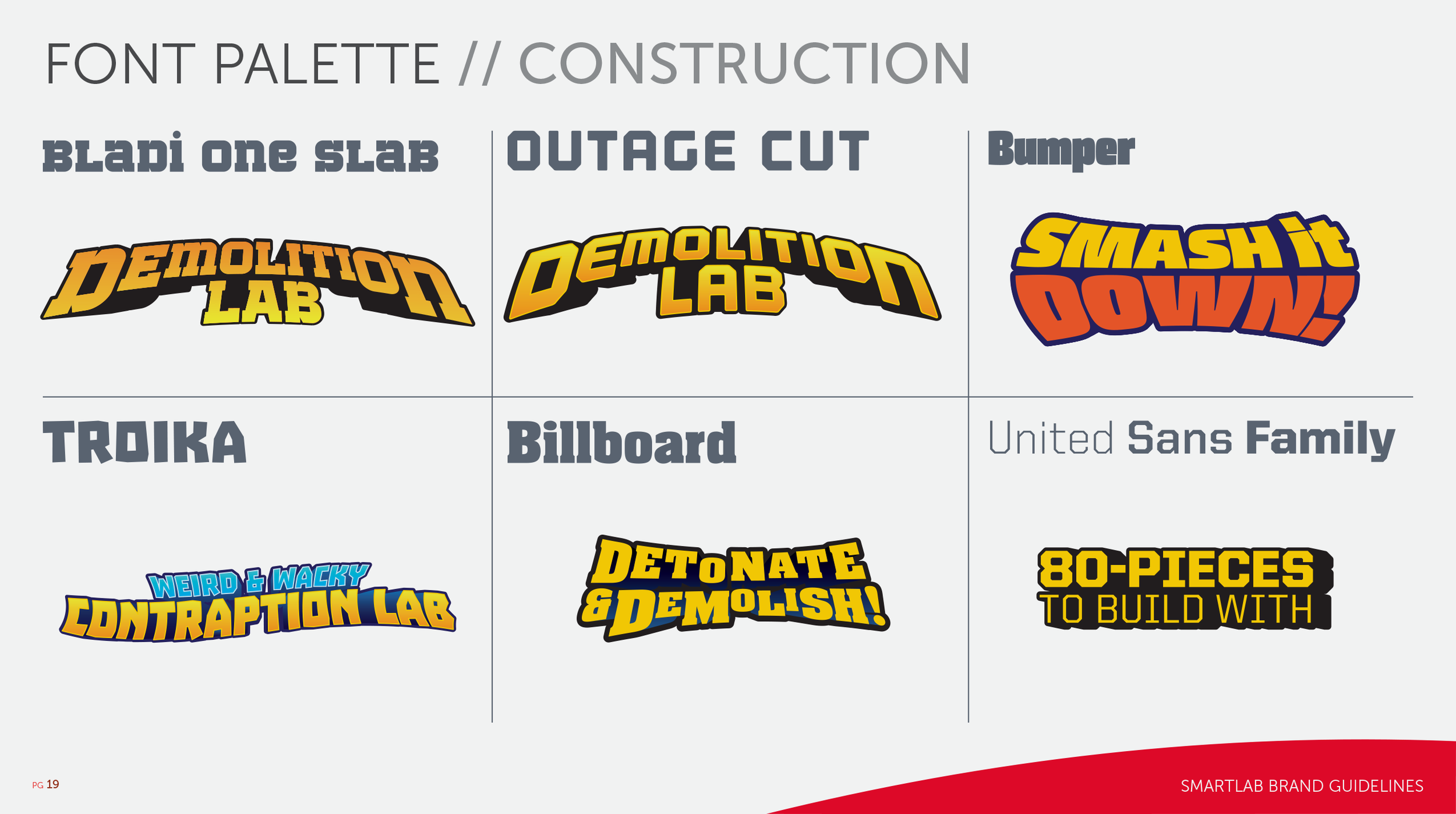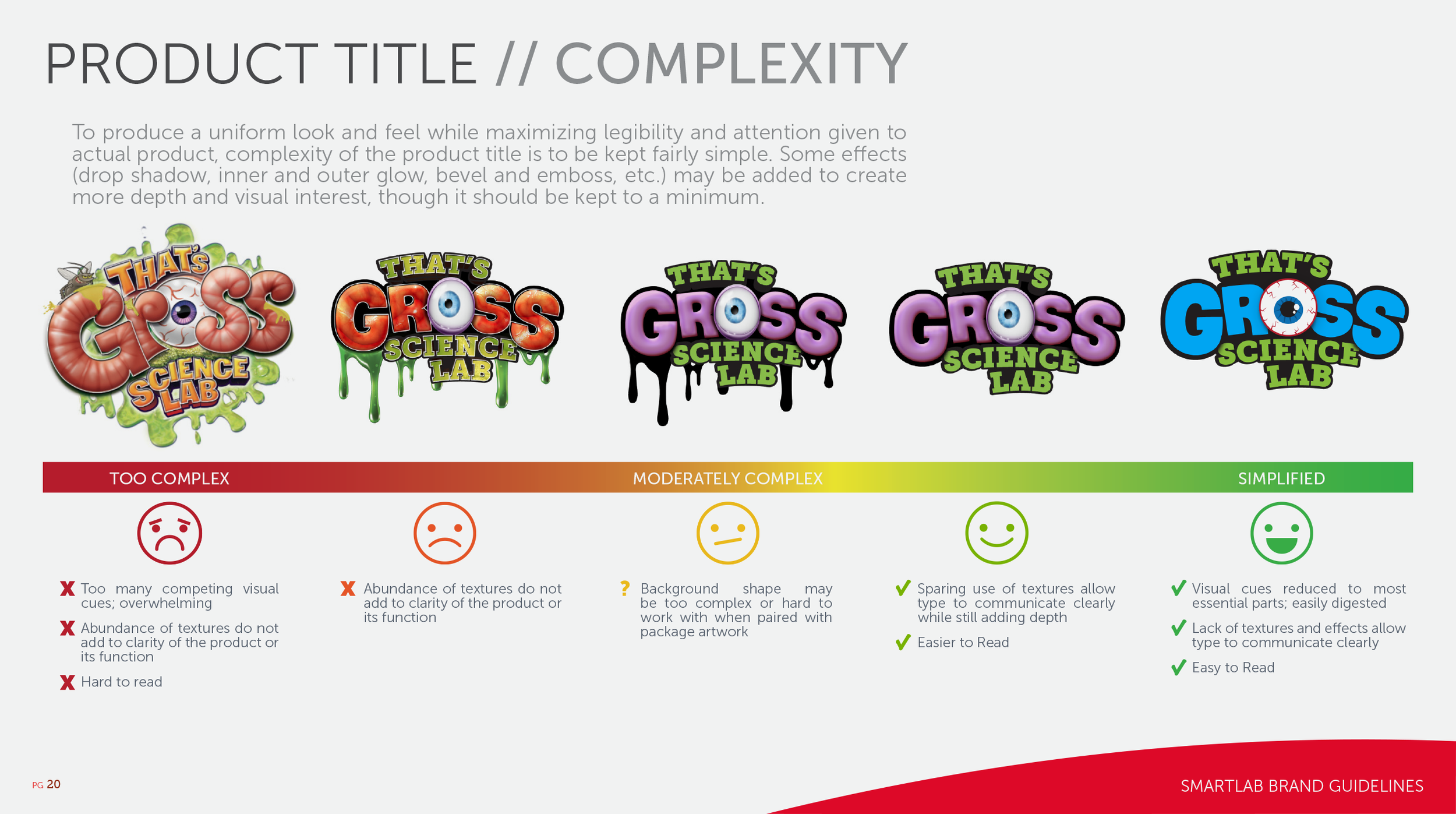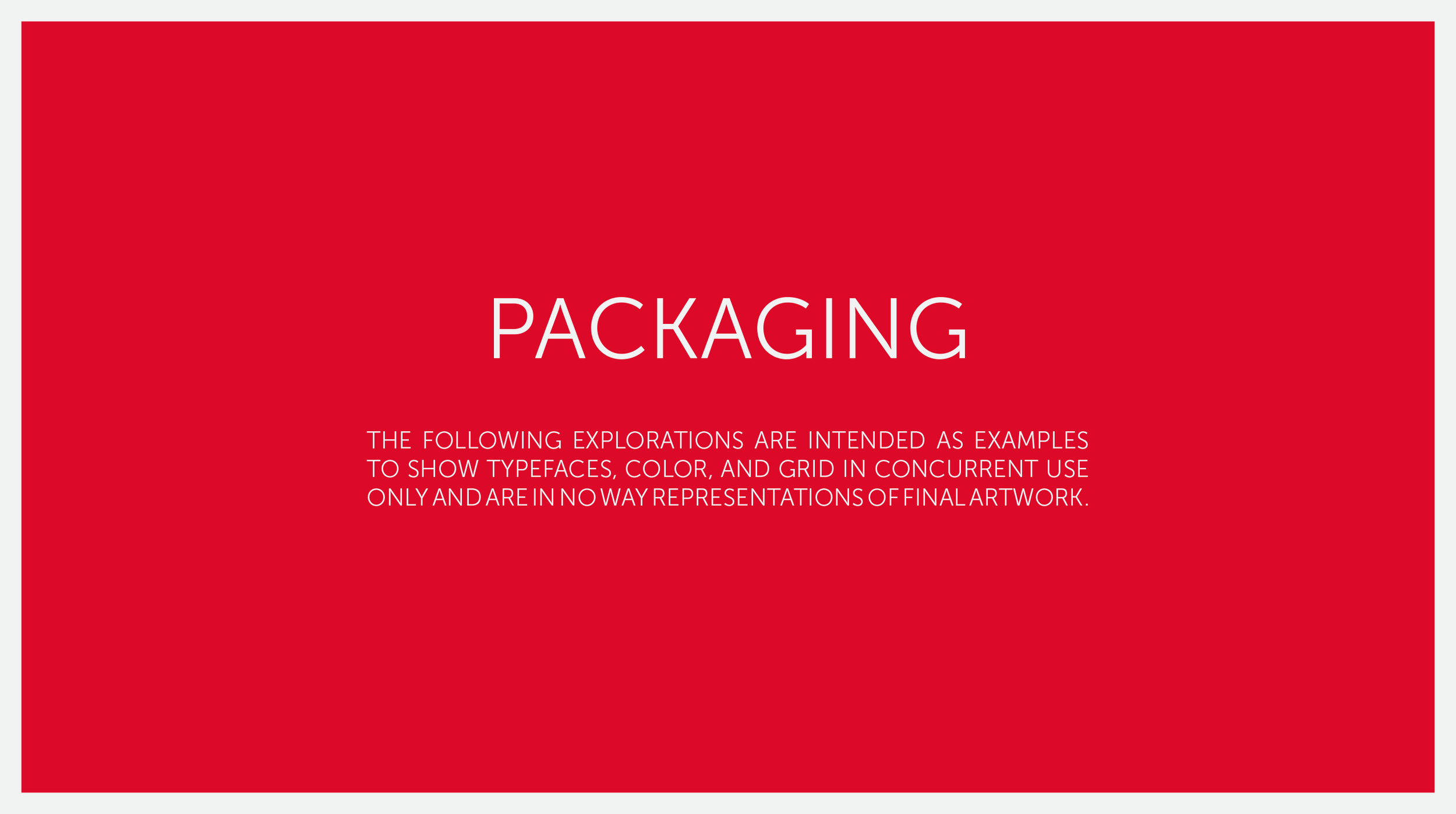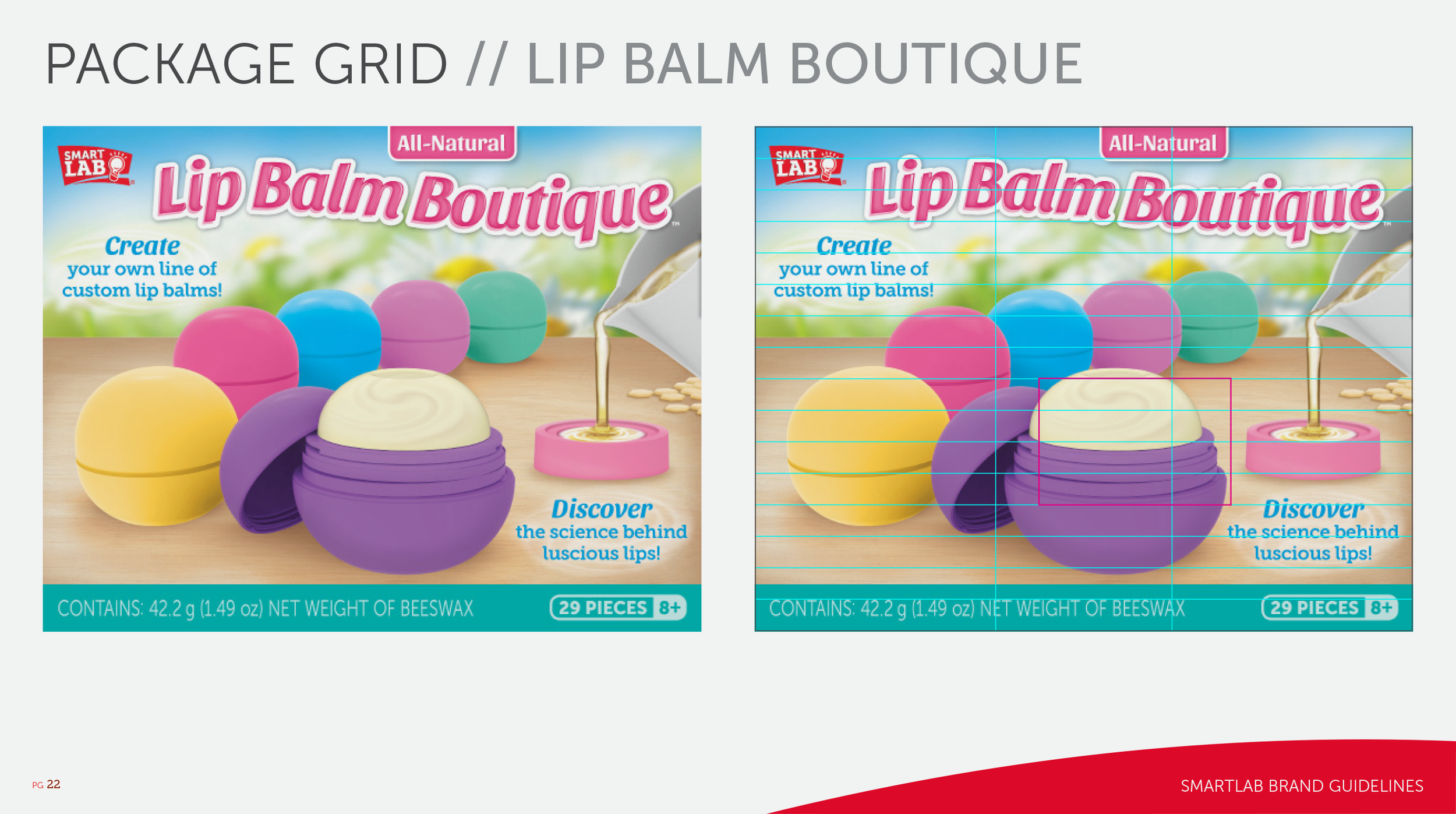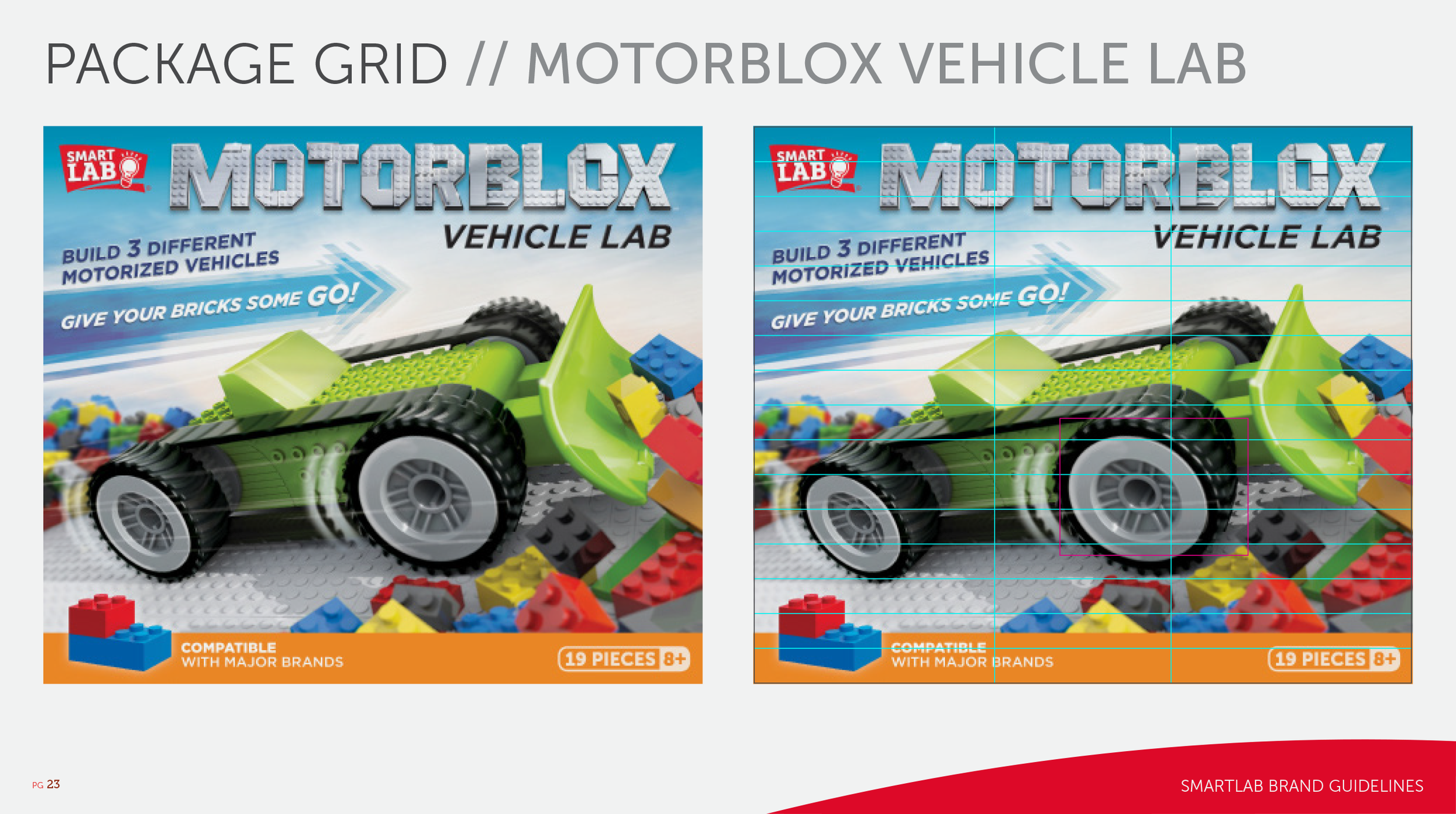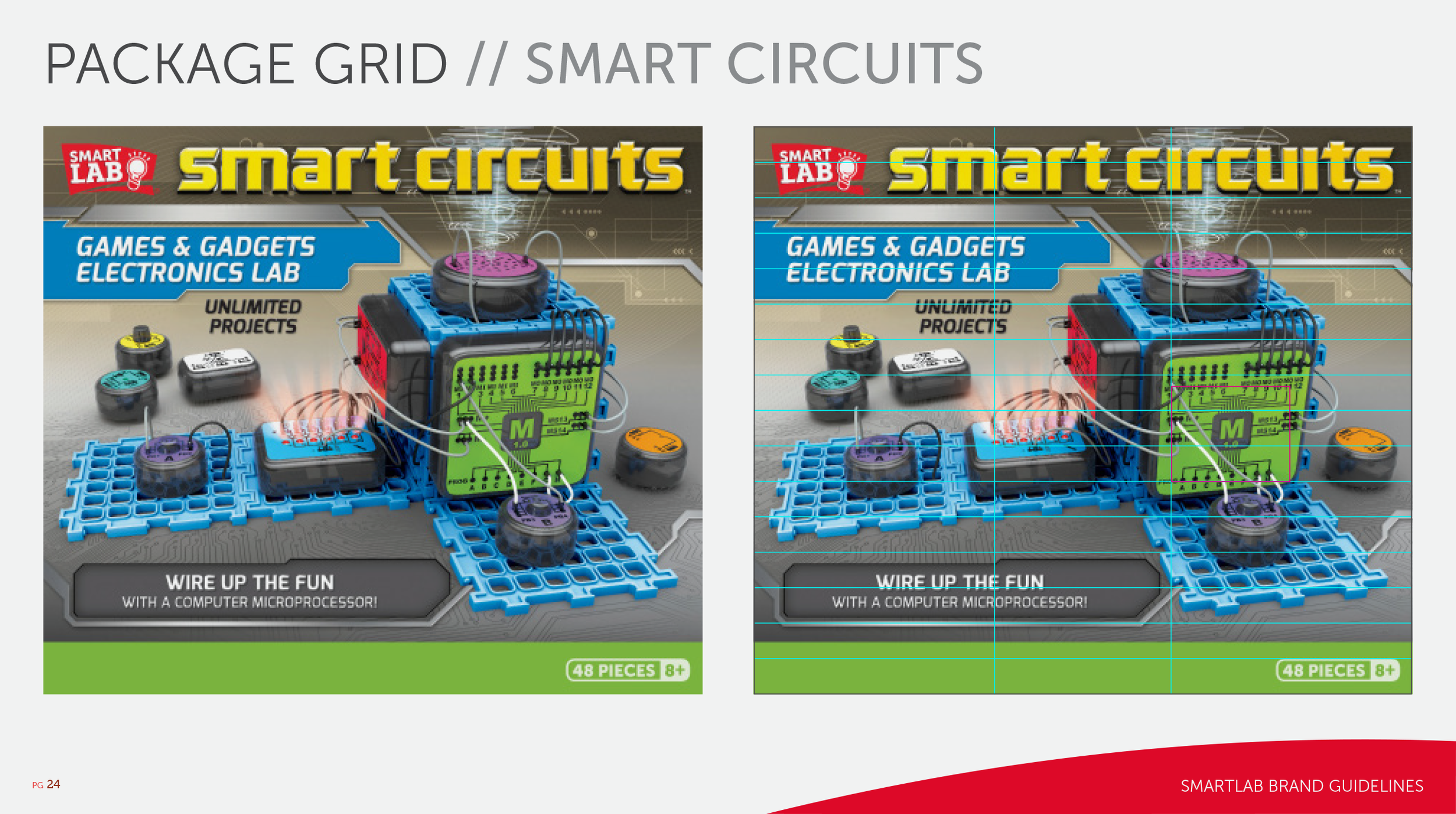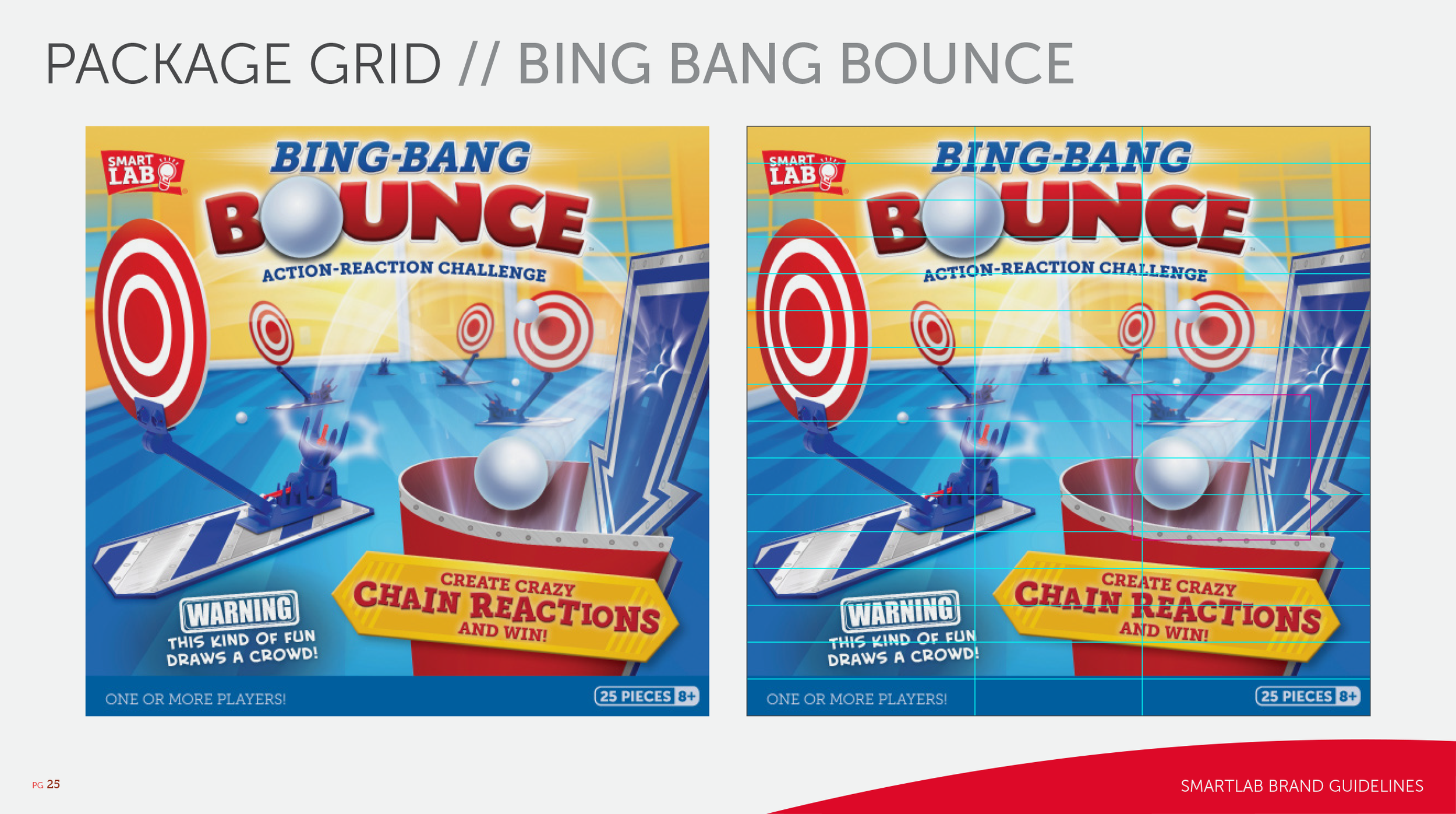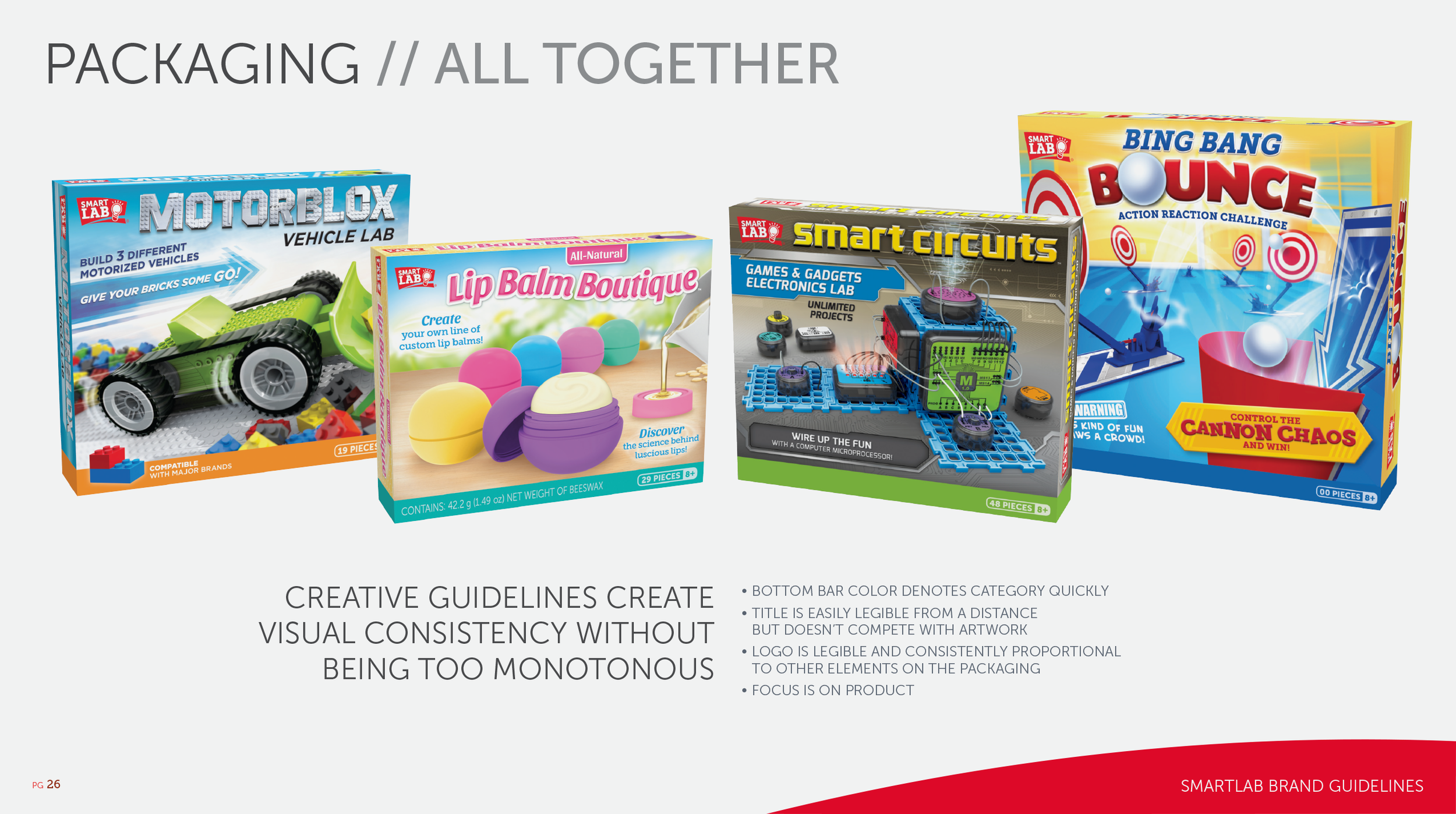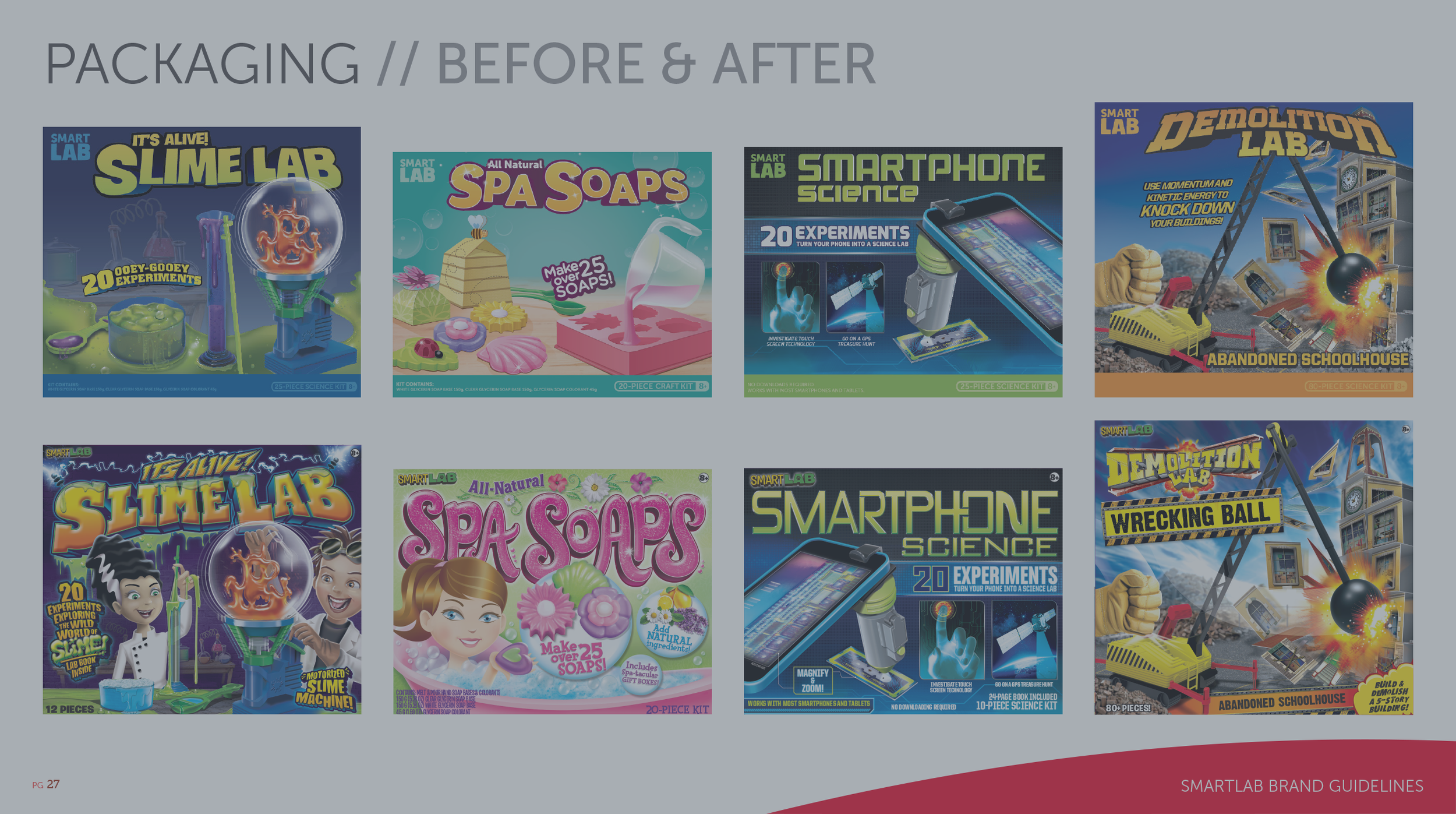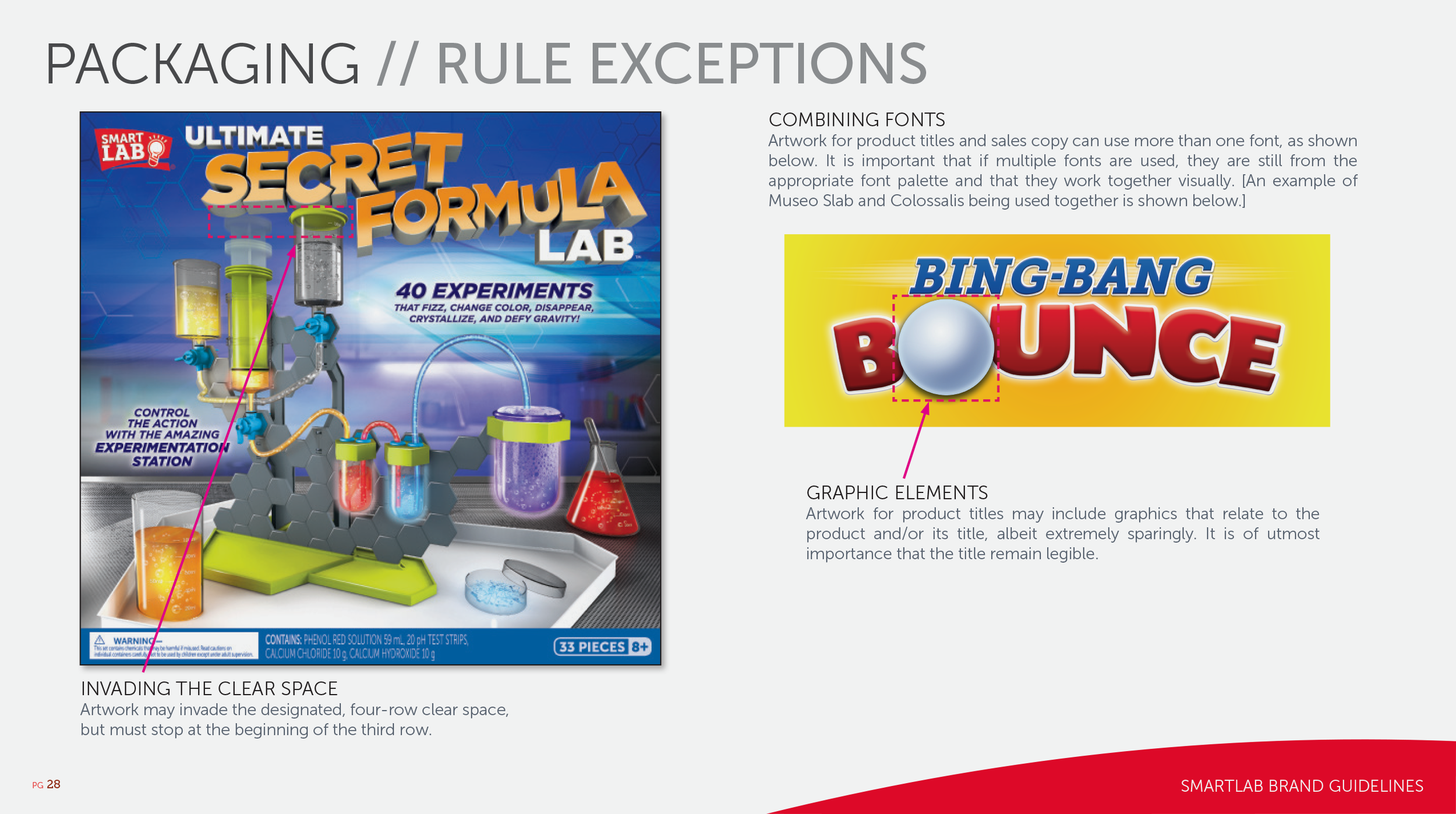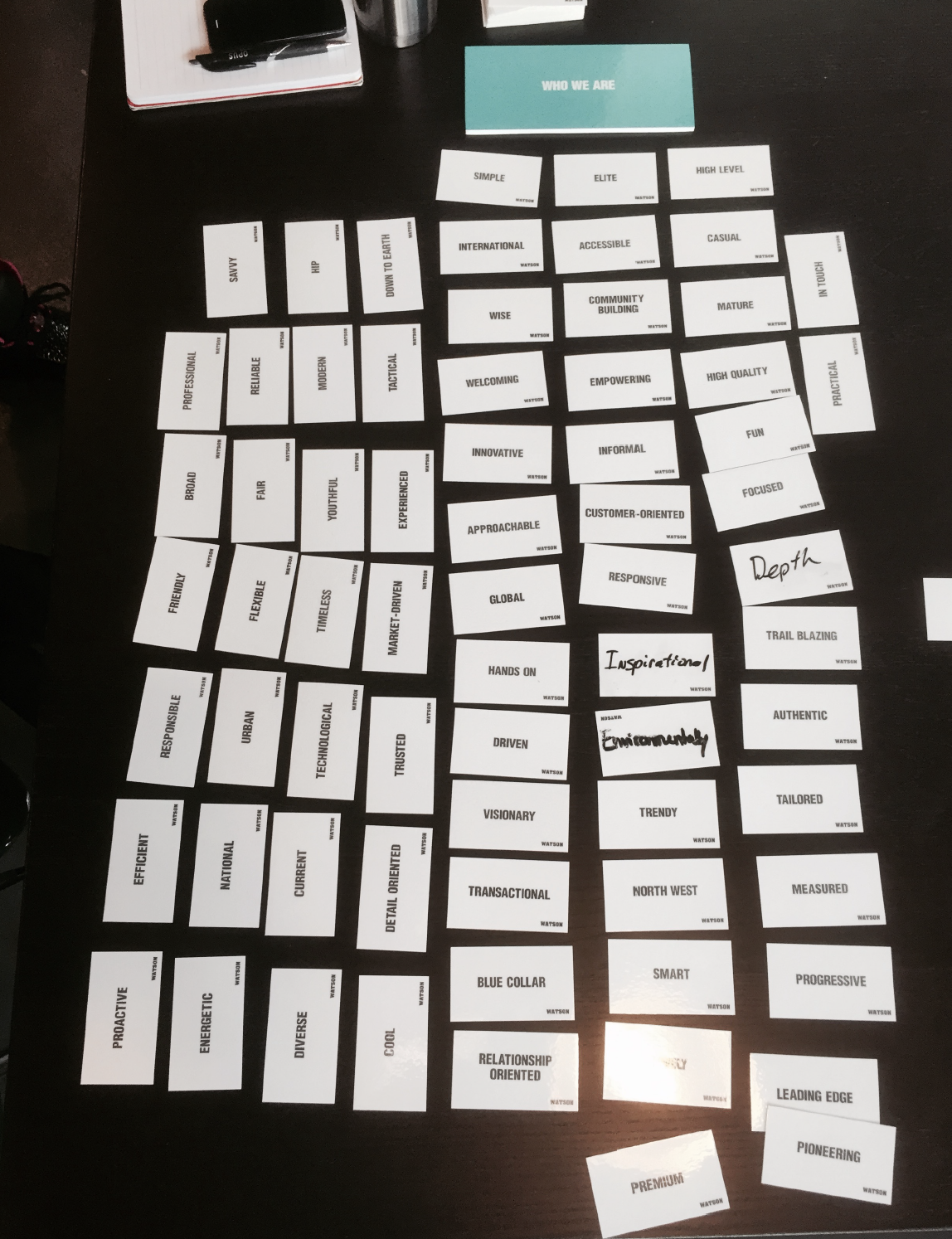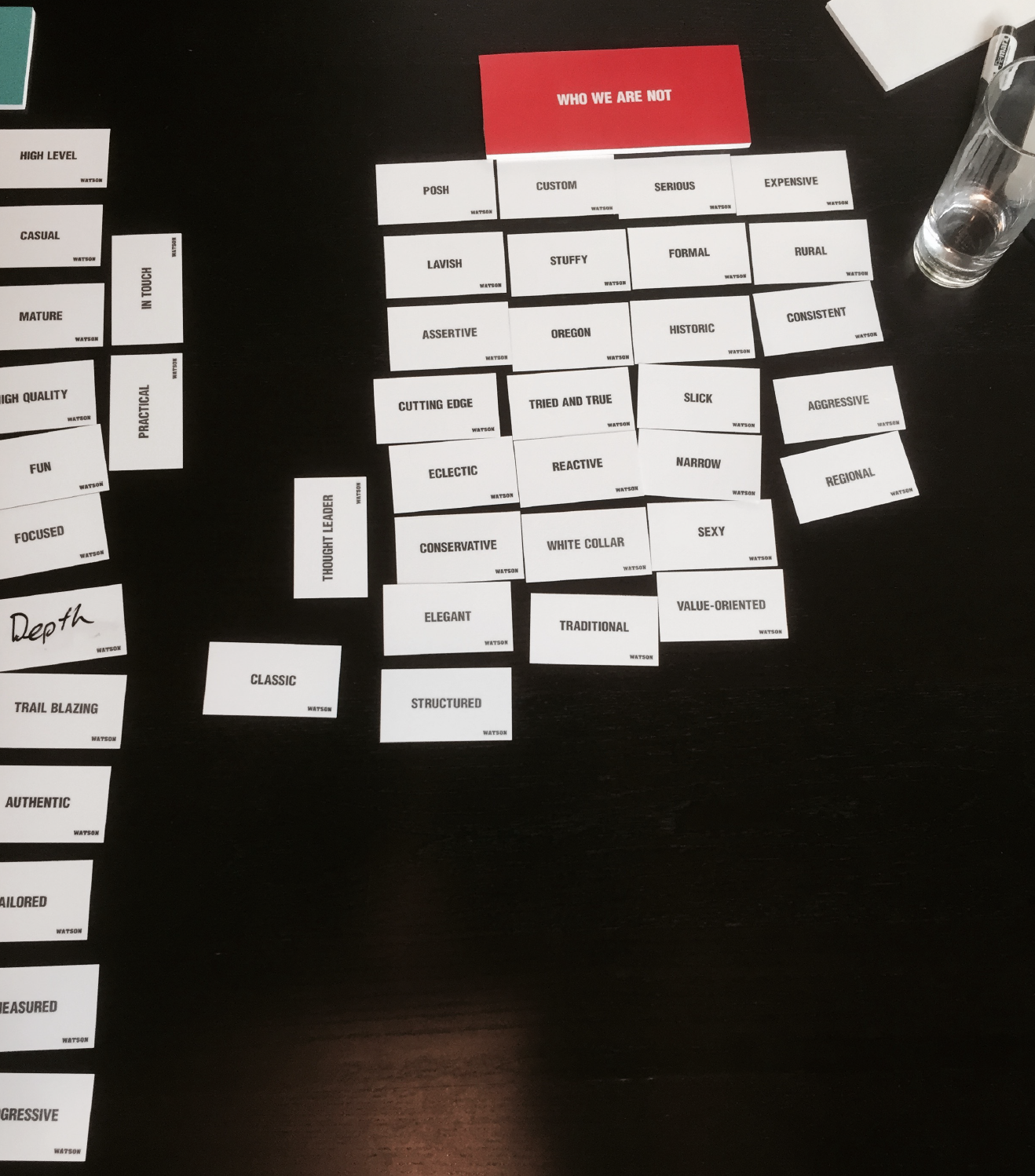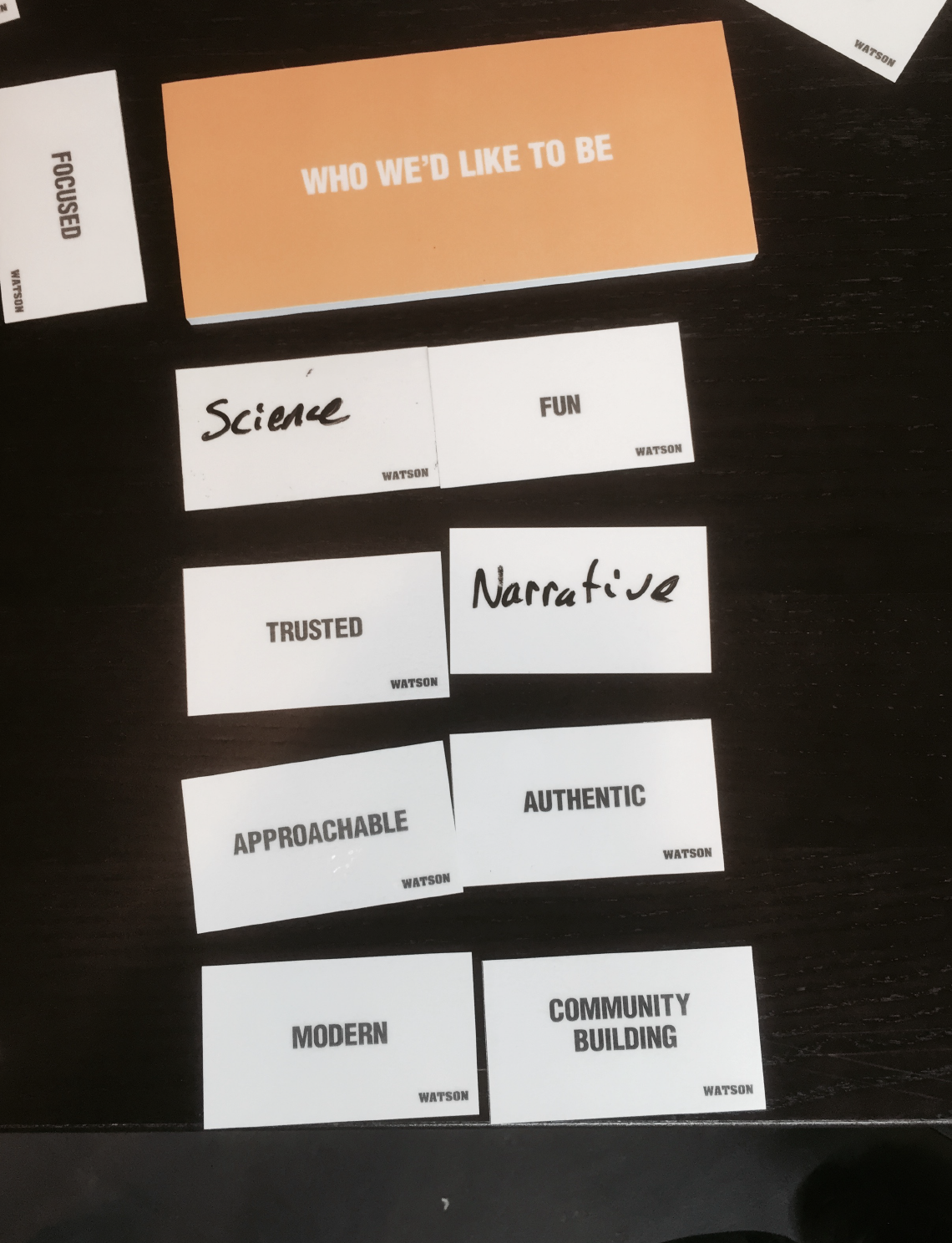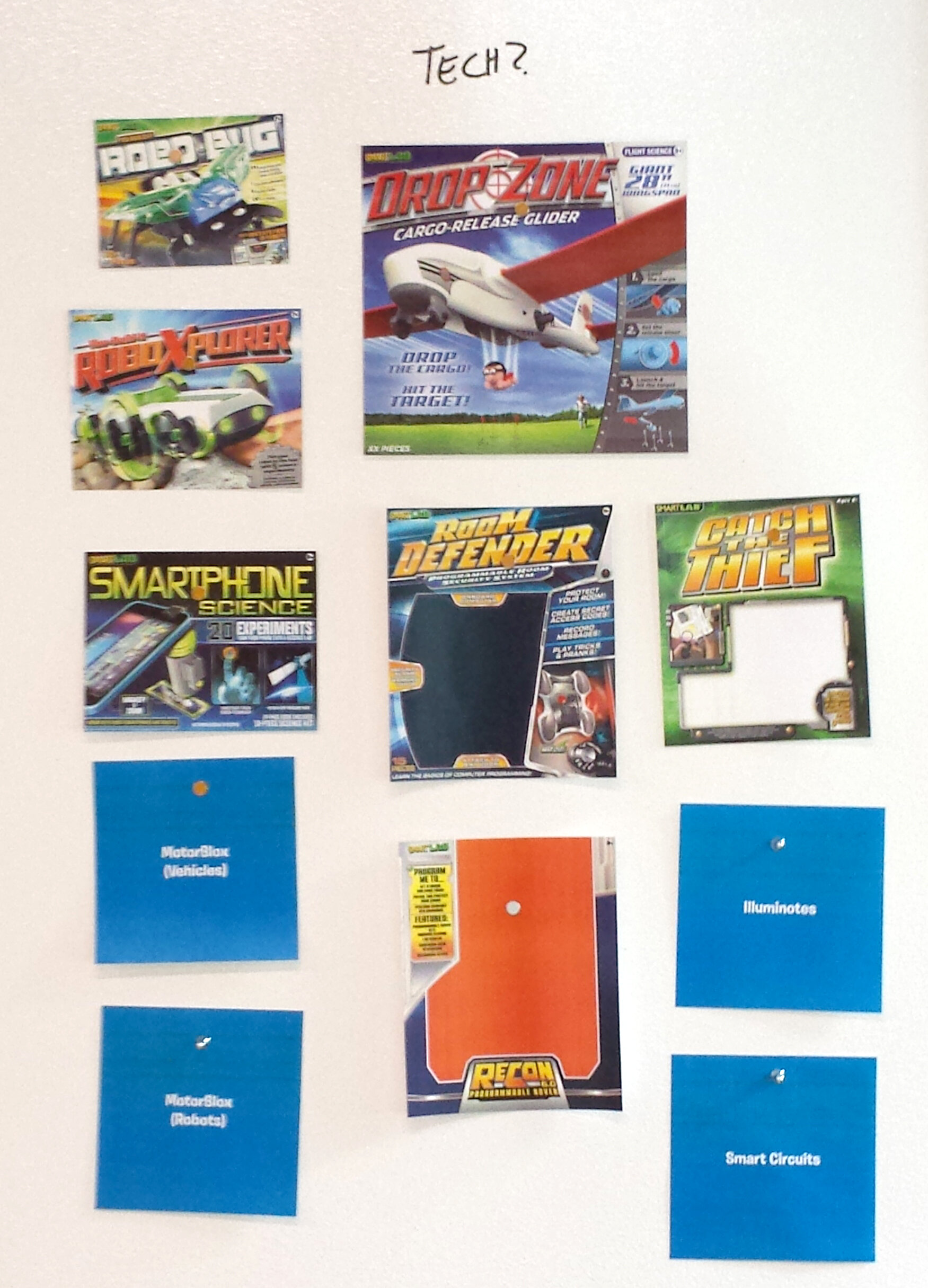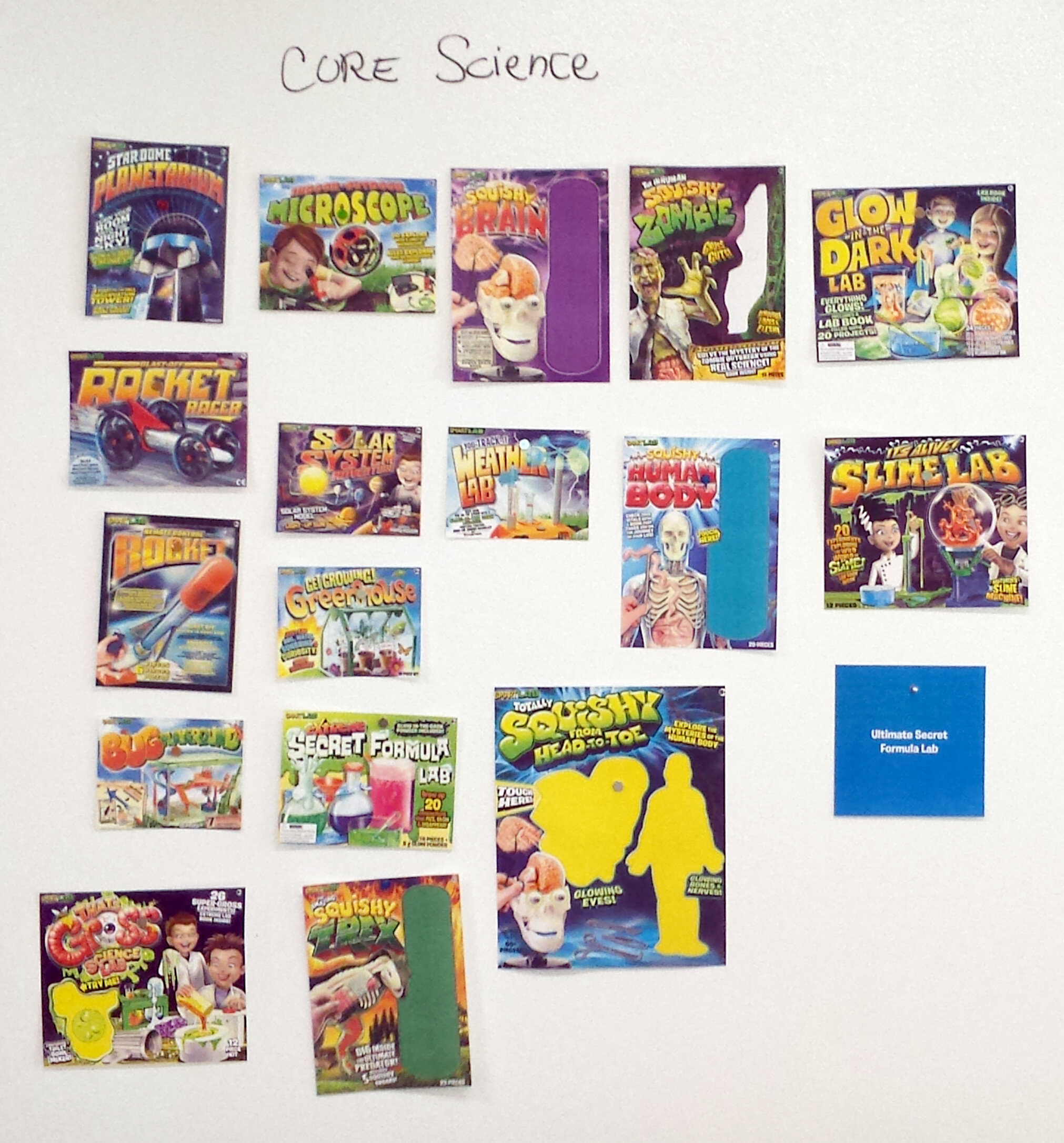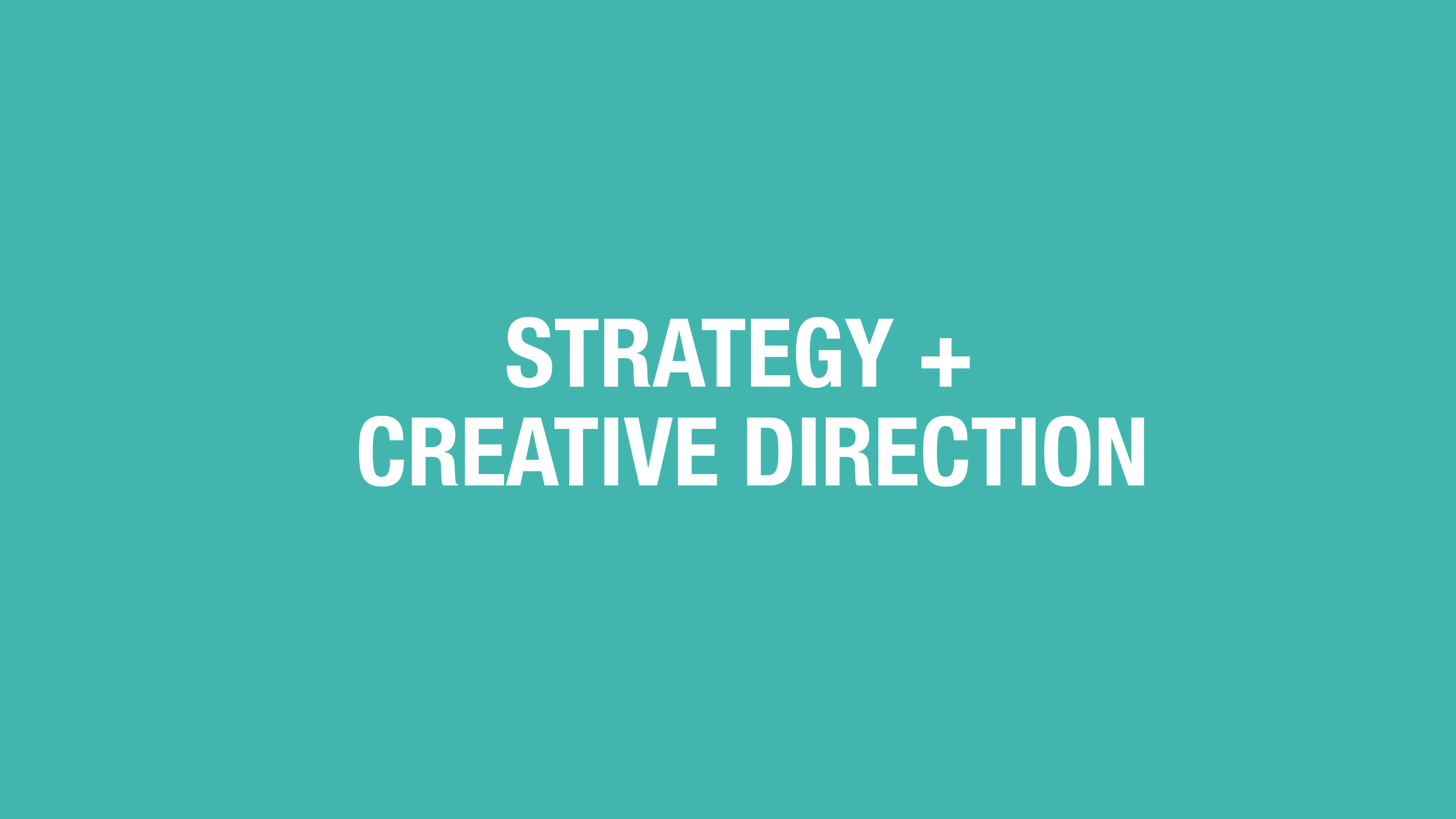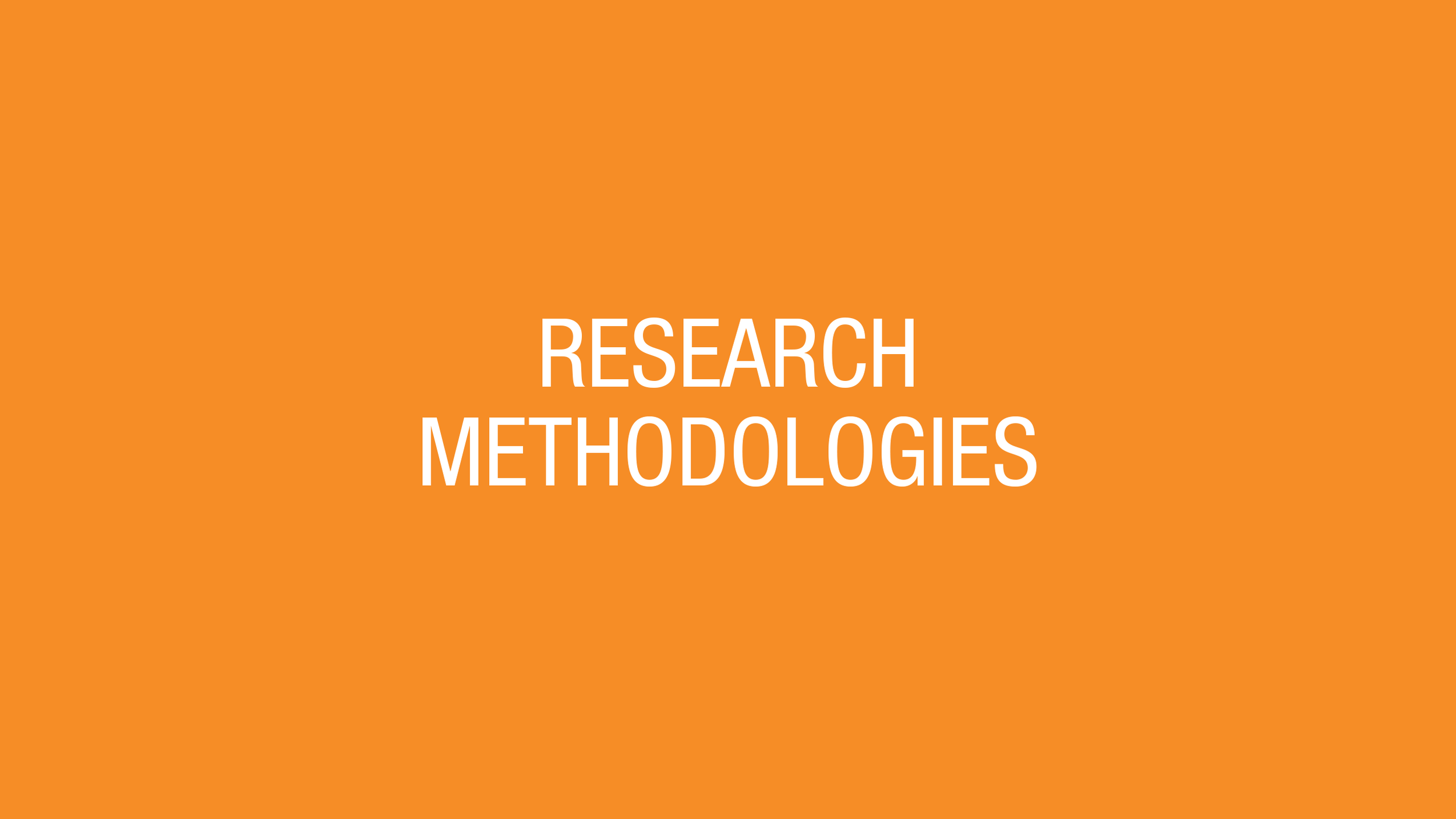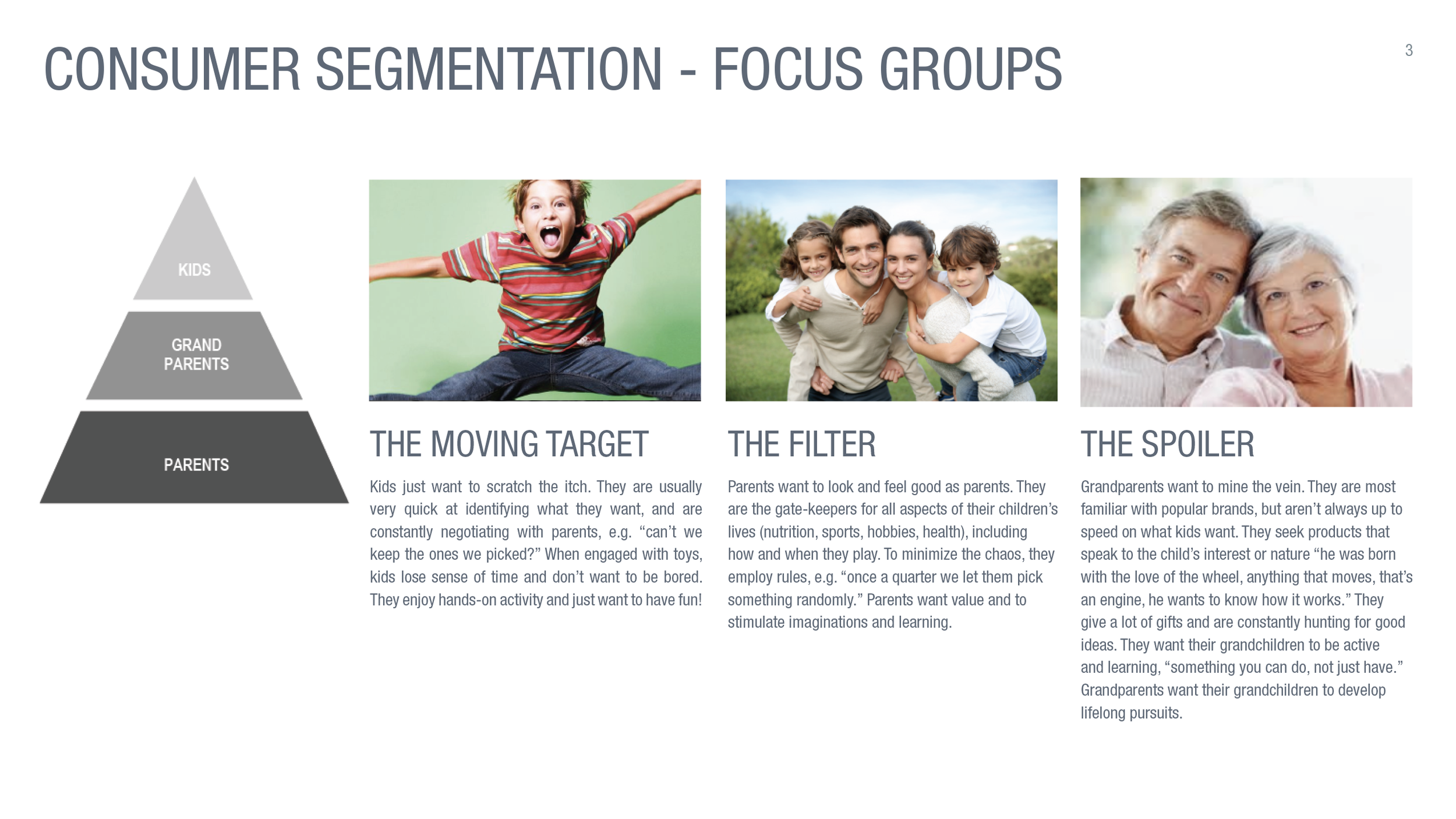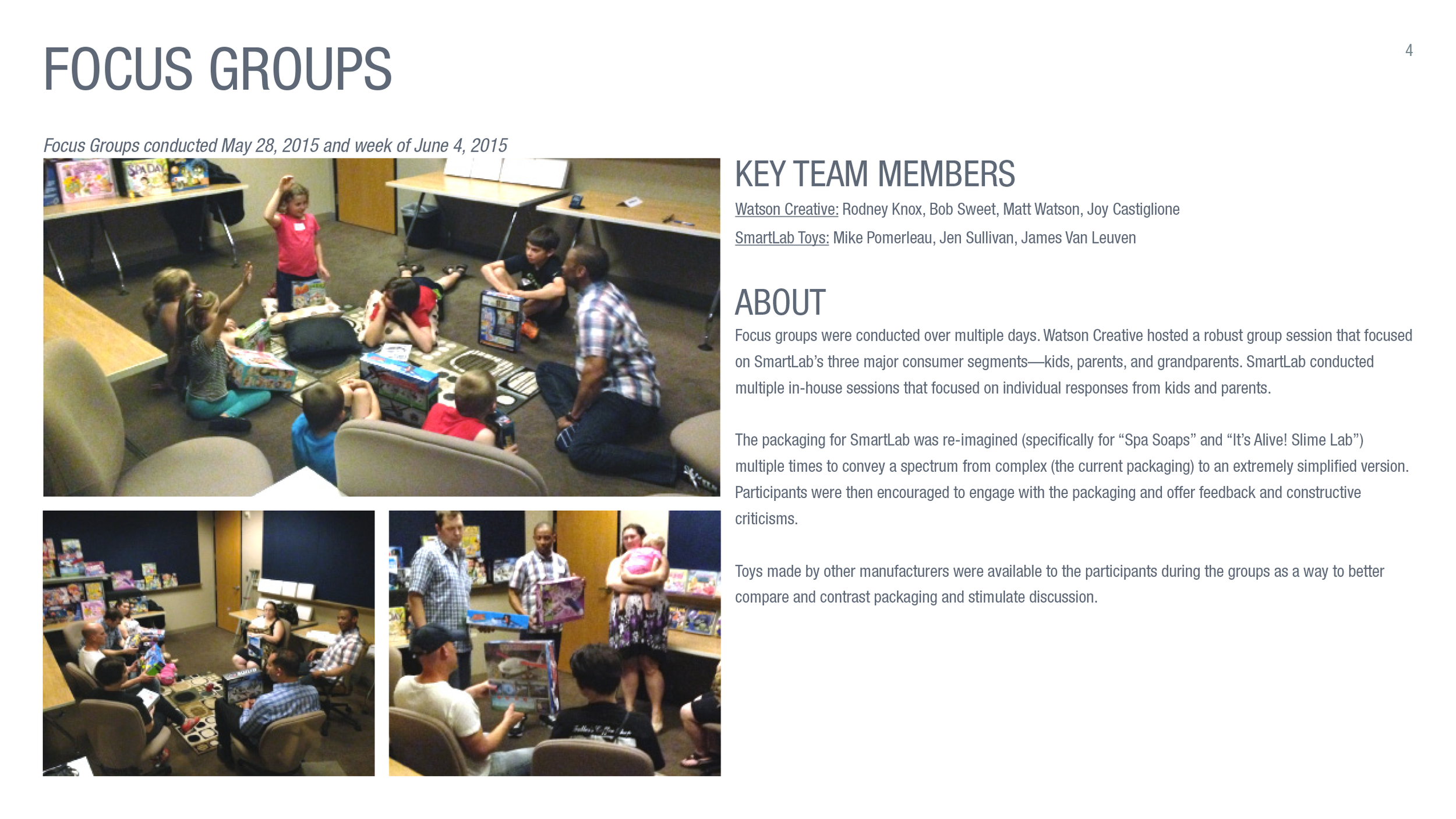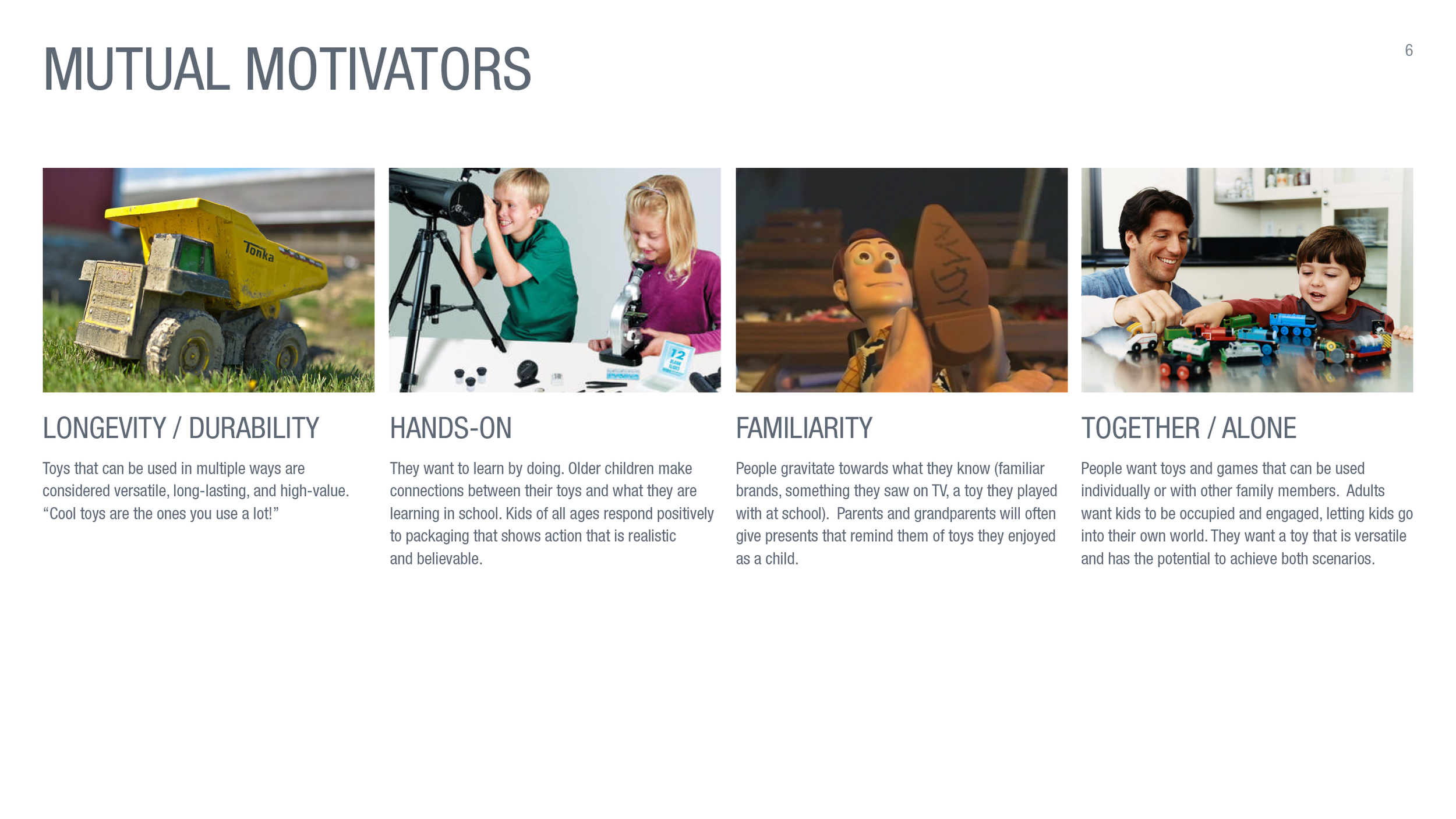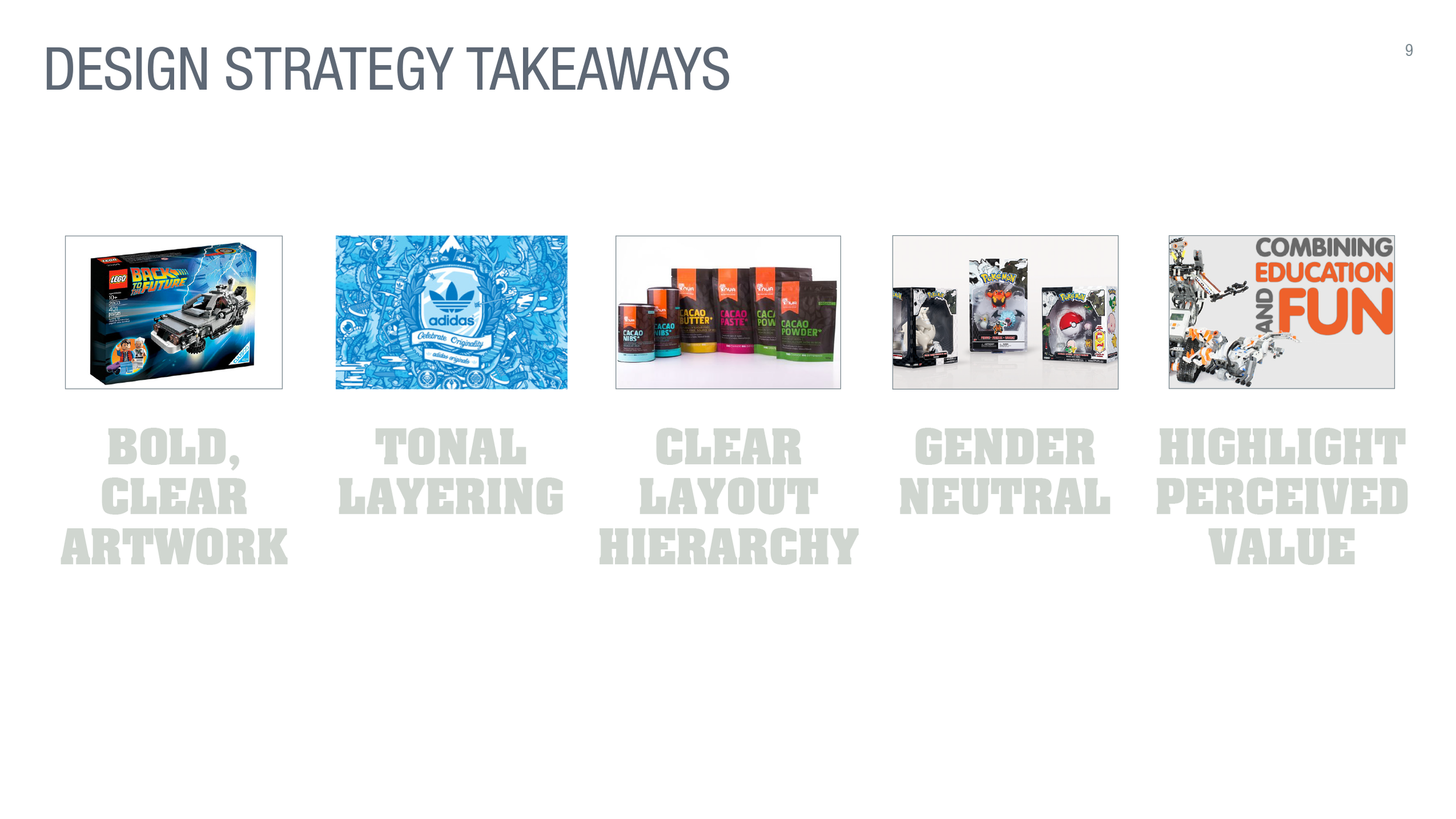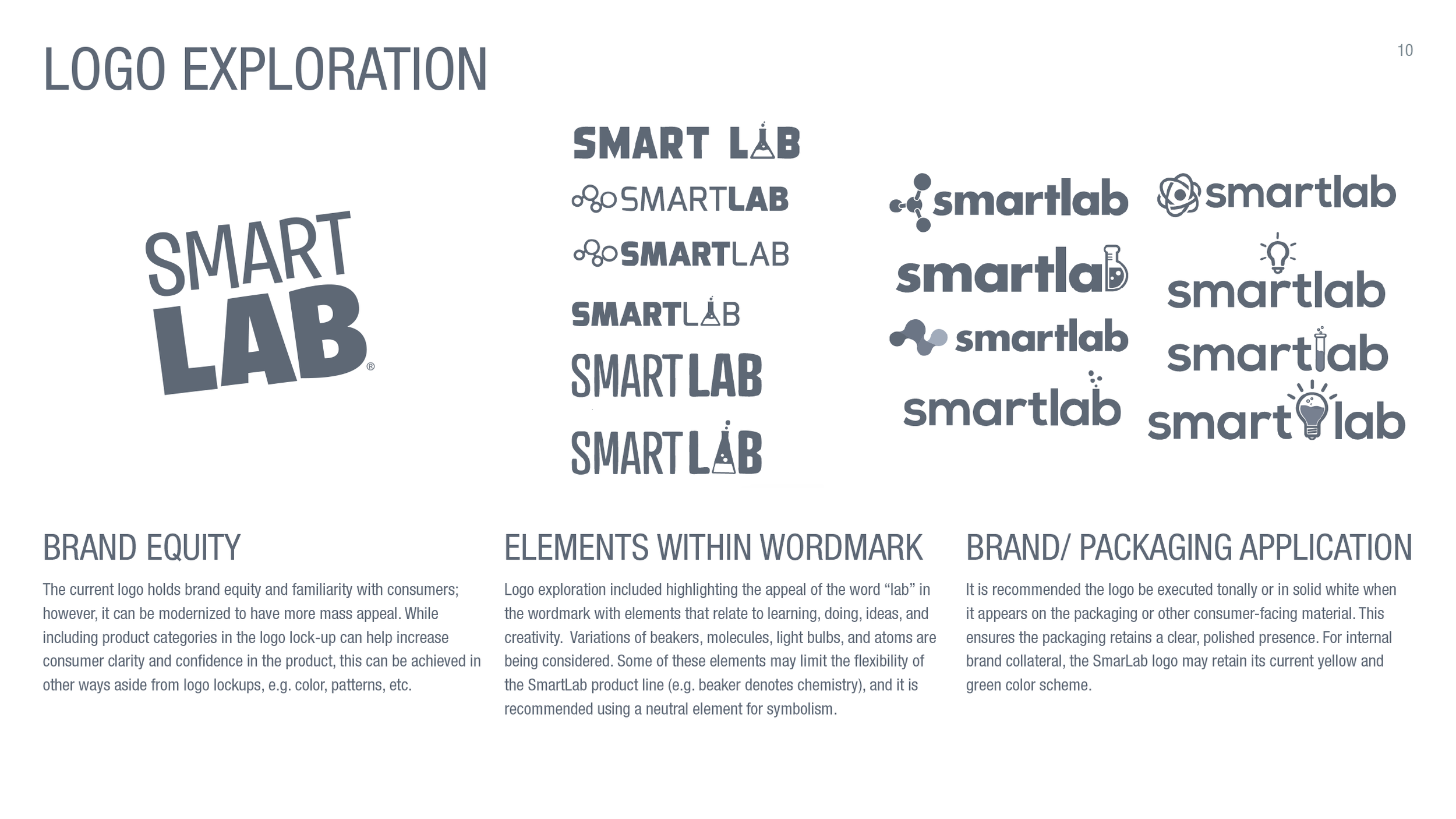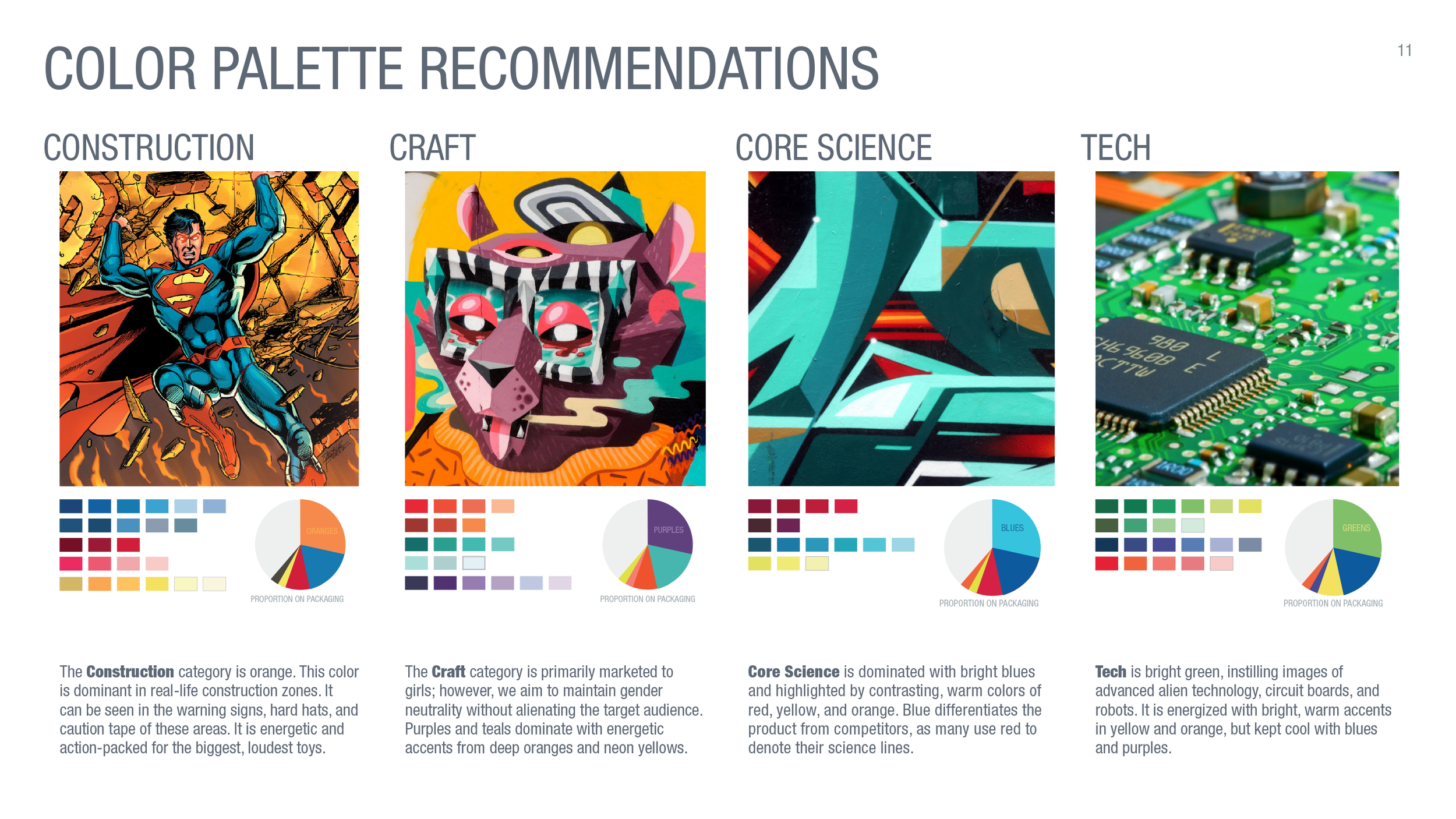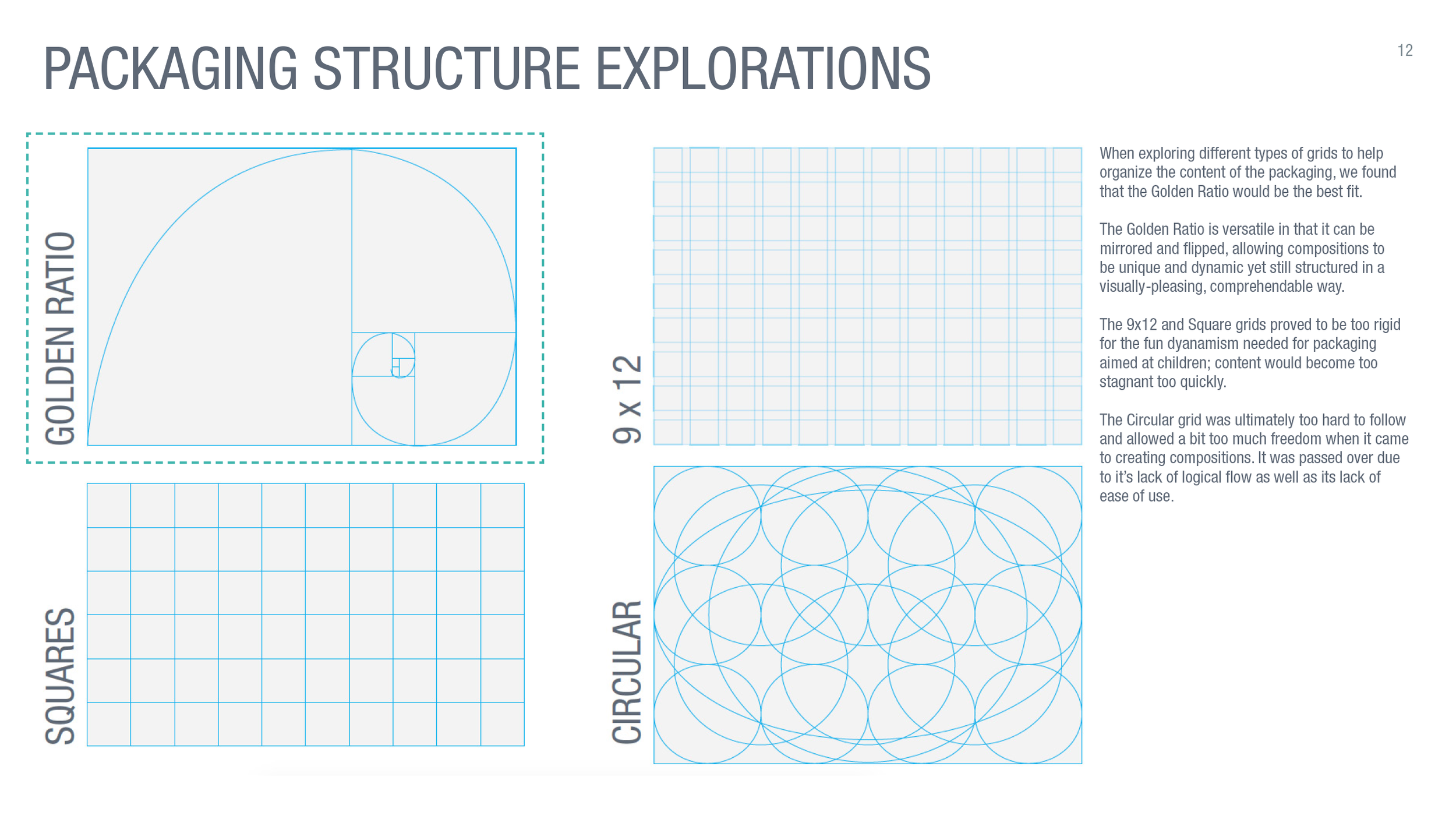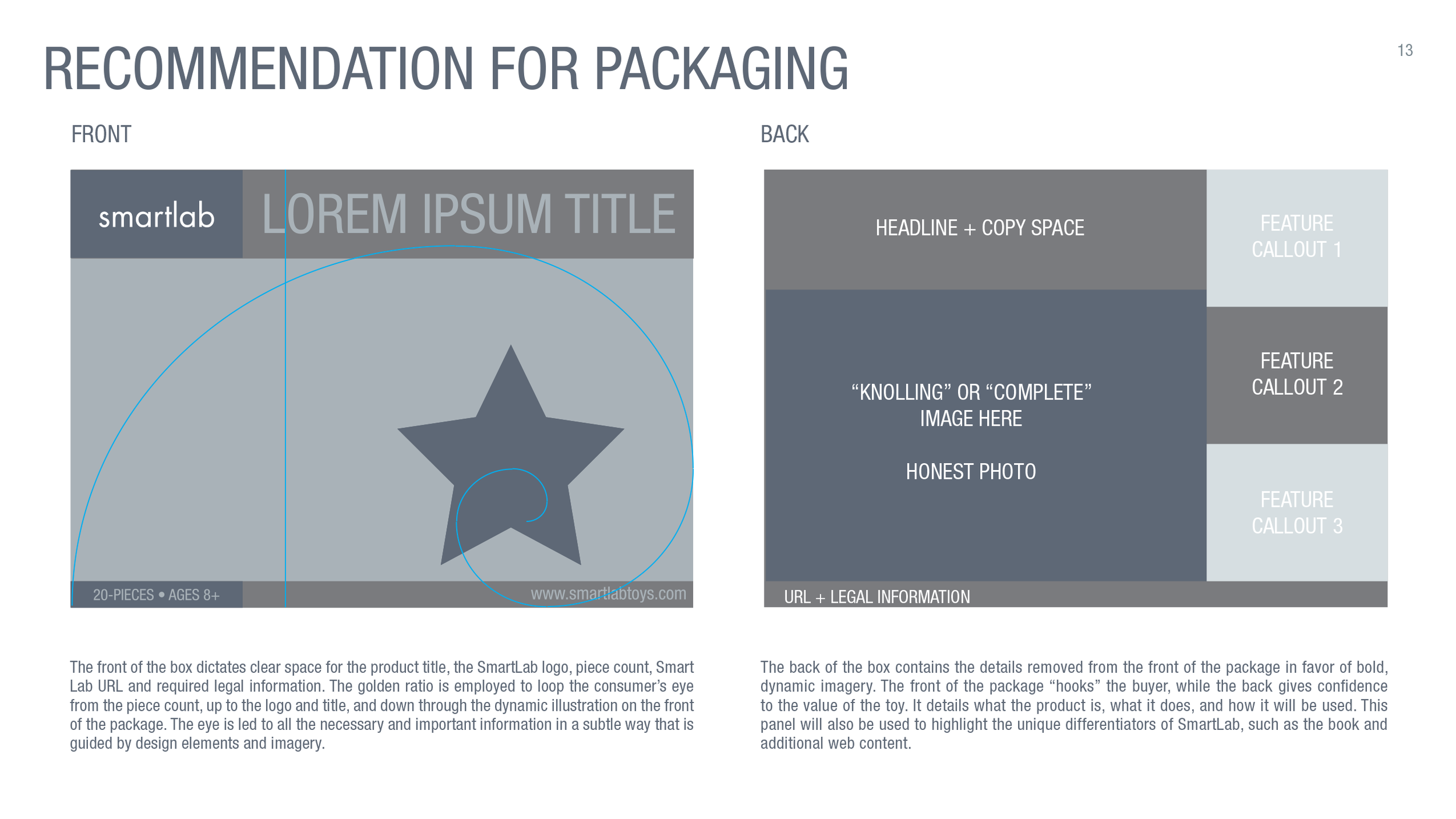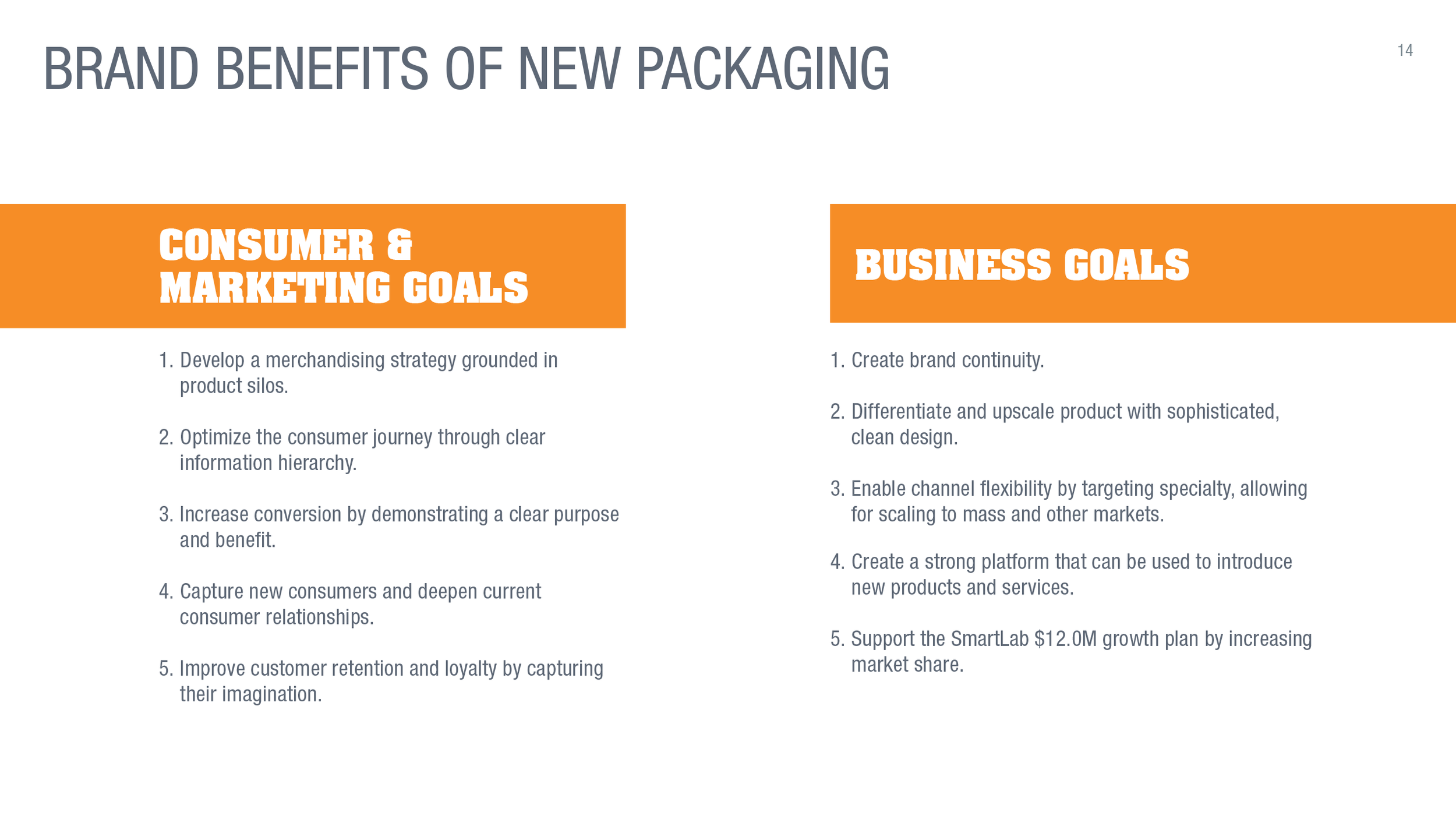SmartLab - Design Rebrand
- Background -
SmartLab, a division of becker&mayer! Book Producers, develops and produces toys and games that give children and parents opportunities to learn and play together. Each STEAM based toy comes with a kid-friendly learning guide, in the form of a book, that is jam-packed with solid science and is exciting in its overall experience. The toys and games produced are invented using established scientific principles and then fact-checked by experts.
The following project description is an overview of what was a complex and lengthy year-long process that spanned beyond the design department and into every sector of business.
Roles:
Art Director
Lead Designer
Project Manager
Teams:
Design
Product Development
Marketing
Sales
Executive Leadership Team (ELT)
Manufacturing Partners
Watson Creative (External Agency)
Date:
October 24, 2014 -
November 13, 2015
- Challenge -
Rebrand company, within regards to existing resources, budget, and production schedule. The main objectives were:
Audit product line.
Research and understand who our consumers were.
Create comprehensive brand guidelines and product categories.
Streamline the design process.
- Process -
In the early stages, we had many whiteboard sessions. We had to develop a plan and get it on paper. Working collaboratively, these meetings mostly focused on developing the foundations of the work to be created. We discussed how to re-categorize our product collection and how to build into it going forward. We also created broad ideas about how to evolve into new markets and gain new fans!
We also needed to understand and learn how our customer base had evolved from the last rebrand. We wanted our end-user to be happy with our products while driving toward business objectives. We also needed to identify distinctions from our competition, product categories, mission, and communication.
- Questions -
We started by asking questions like:
Who are we, who are we not, who do we want to be?
Who is our end user and who touches it along the way?
Who is purchasing the products?
What are their specific needs?
What information is primary, secondary, and tertiary?
What resources do we have and what do we need?
Where do these products live?
When does the rebrand need to launch?
Why are they purchasing these products?
How do we maintain SmartLab’s core mission?
How do we achieve this with our staff, budget, and time?
How has the industry evolved, and how will it grow?
- Partnerships -
We searched nationally and hosted a design competition with a number of agencies. After a rigorous search, we selected Watson Creative to partner with. They helped mobilize our raw ideas and were also pivotal in helping us gain industry insights and facilitate focus groups.
- Focus Groups -
We hosted many, many, many, focus groups to gain insights from the field and our end-users. Our focus groups varied from group to individual interviews that took place in both controlled and uncontrolled environments. We often went into the field to gain honest insights into what was working and what wasn’t. Ultimately, we decided that it was SmartLab’s product packaging that was the most visible and important piece to centralize the rebrand around.
- Approvals -
After our ground work and investigations were mostly complete, it was time to pitch our findings to the executive team to gain approvals before moving forward. Long story short, they loved where we were heading!
Pitch Deck
After presenting our work to the executive team, we brought our work back on the road with us to the New York Toy Fair. We were eager to present our hard work to our partners and excited to hear their feedback.
Following the NYC Toyfair we presented refined designs to focus groups. Then, finally, after months of research, design refinements, a few more focus groups and investigations we finalized our work and presented it all to the executive team for a final approvals. Whew!
- Conclusion -
The result was a successful rebrand that touched every channel throughout the company. The guidelines provided clear and detailed information that encapsulated every aspect of brand and how to design within it. It provided insights into our internal capabilities and helped us communicate with our creative partners. The design decisions trickled down to every sector of the business. The new language and look supported Design, Product Development, Marketing, and Manufacturing partners with much-needed information on how to help guide design decisions. Furthermore, the guide helped support the Sales team by providing them brand information and talking points when interfacing with potential buyers. As a result of more streamlined communications between the Sales team and their buyer networks, SmartLab was able to reopen distribution channels that had been previously lost, such as Target and Barnes and Noble.
The executive leadership team was impressed by the depth and level of work created and championed the process we went through. I feel grateful to have had leadership who understood, first-hand, how difficult the process of rebranding a company actually is. I believe that knowledge and the trust they had in me and my team greatly assisted in the overall pace we were able to maintain.
Finally, and most importantly, the work we did resulted in a much more positive user experience. People now, more than ever, understood exactly what they were buying, could clearly understand the instructions, and recognize the product family from afar made me proud. People were also now able to clearly understand what SmartLab stood for on each box. Folks knew that the product they were about to purchase was more than just a simple toy, but a toy their niece, son, or grandchild could learn from. That was a huge accomplishment.
